
ISSUE 18, APRIL/MAY 2024 THE OFFICIAL PUBLICATION OF THE AMERICAN GLAMPING ASSOCIATION
with the
Live
land! MAKE A SPLASH THE POWER OF THE WATER FEATURE NOOK A NEW BRAND FOR GLAMPING GET YOUR TAILS WAGGING DOGS ARE GOOD FOR BUSINESS RANCHLANDS SADDLES UP FOR THE SEASON

Glamping Business Americas is published by The Glamping Show USA and Upgrade Publishing
Address:
1129 Maricopa Hwy B150 Ojai, CA 93023
USA
Publishers: Upgrade Publishing
Steph Curtis-Raleigh
e: steph@upgradepublishing.com
Reporter/social media: Annie Hilton
e: media@upgradepublishing.com
Advertising sales: David Korse t: 1-805-258-2836
e: david@glampingshow.us
Design: Melissa Douglass i for detail
www.ifdetail.com
www.glampingbusinessamericas.com
Instagram @thisisglamping Facebook @thisisglamping
Events:
Glamping Show Americas
w: www.glampingshow.us
e: david@glampingshow.us
The Glamping Show UK
w: www.theglampingshow.com
e: dan.w@swanevents.co.uk
© Upgrade Publishing Ltd. Glamping Business Americas is published five times a year. No reproduction of any part of the magazine is permitted, nor storage in a retrieval system without prior consent of the publisher. No commercial exploitation is permitted. No warranty is implied in respect of any product or trader mentioned herewith. Prizes offered in competitions might be substituted with ones of similar value.
Welcome to our April issue where we dive into a myriad of topics, from welcoming furry friends on site to unlocking the hidden potential of bodies of water at your location.
In this edition, we delve into the intricacies of accrual in accounting with Tyler Otto and explore the world of securing finance with expert advice from Paul Bosley. Legal guru Christine Taylor leads us through essential security measures, protocols, and liability concerns.
But that’s not all! Join us as we saddle up with the team at Ranchlands to discover how their reverence for the land and ranching traditions shapes their unparalleled guest experience.
We also get up close and personal with the creative minds behind the iconic design decisions at Autocamp’s


Subscribe for free at www.glampingbusinessamericas.com
glampingshow.us | Glamping Business Americas | 03
stunning
and
David Korse Director Welcome CONTENTS 05 Industry news and products 11 Letter from AGA founder: Introducing American Glamping Association Committees 12 Ranching in style 16 Should glamping be going to the dogs? 20 Harmonizing luxury and nature: HKS and AutoCamp’s bold approach 25 The man in the mirror 28 Join a rising tide 33 Ensuring campground safety: Protocols and best practices for owners 36 Unlocking opportunities: A comprehensive guide to financing your glamping venture 38 The water experience 41 The glamping structures with three lives 42 It’s accrual world
16
Zion
Joshua Tree resorts. Plus, don’t miss our exclusive chats with innovative brands ÖÖD, Nook, and Ekō Solutions.
Cover: Ranchlands Collective Inaugural Gathering at Paintrock Ranch, Wyoming. Photo by Claudia Landreville

BEL AIR RESORTS GROUP ANNOUNCES EXPANSION WITH NEW GLAMPING DESTINATION IN UPSTATE NEW YORK

Bel Air Resorts Group, a leader in luxury real estate and hospitality, announced its strategic expansion into Upstate New York, marking the latest addition to its portfolio of unique glamping destinations.
The Group, known for its pioneering design and luxury lodging across North America, has acquired a 70-acre parcel in Upstate New York to develop a state-of-the-art luxury glamping resort.
The expansion builds on the Group’s impressive
trajectory from the scenic vistas of Mont Tremblant, Canada, to the paradisiac beaches of Eleuthera, Bahamas, and the green landscapes of Asheville, North Carolina. Each destination reflects Bel Air’s commitment to blending cutting-edge design with the natural beauty of each location, setting new standards for luxury in the great outdoors.
“Our mission has always been to redefine luxury lodging by integrating innovative design with the unparalleled beauty of nature,” said Eric Harari, CEO of Bel Air Resorts Group. “The Upstate New York project is a continuation of this vision, offering unique lodging options such as geodesic domes and pods that promise an unmatched glamping experience.”
The project’s roadmap includes a 12-15 month entitlement process, laying the groundwork for what is anticipated to be an unparalleled retreat, embodying sophistication and the spirit of
adventure. As the Group prepares for construction in Eleuthera and North Carolina towards the end of 2024, the New York venture is poised to further cement Bel Air’s role as an innovator within the hospitality industry.
Bel Air Resorts Group invites guests and investors to follow the development of this exciting new destination, as it continues to push the boundaries of luxury glamping and hospitality.
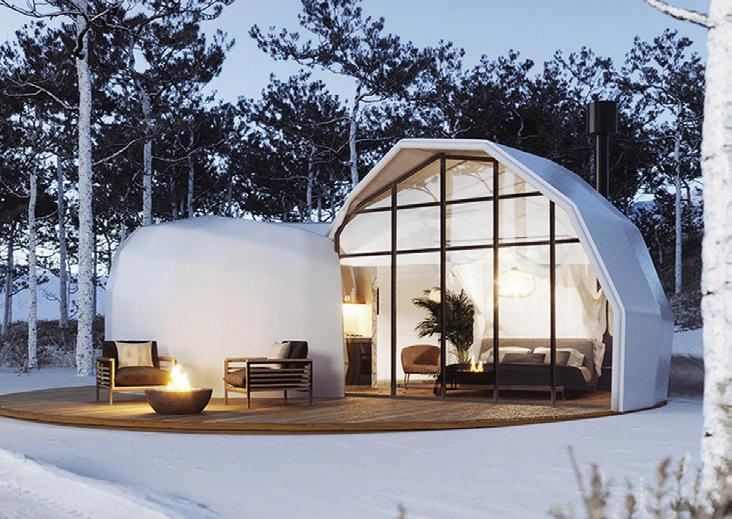
HILTON AND AUTOCAMP PARTNER TO OFFER ELEVATED GLAMPING EXPERIENCES
Hilton has entered an exclusive partnership with premier outdoor hospitality company AutoCamp. The partnership will offer Hilton guests an experience that blends the spirit of an iconic outdoor adventure with the hospitality and design-forward thinking of a boutique hotel, in spectacular settings that include properties adjacent to popular national parks. Hilton guests can now add National Parks, custom Airstreams, luxury tents and starry skies to their bucket lists.
AutoCamp stays will be bookable on Hilton’s
direct channels in the coming months, giving Hilton guests direct access to outdoor hospitality that goes beyond glamping.
Hilton Honors members will be able to earn and redeem Points and enjoy exclusive member benefits while experiencing sought-after locations across the United States, such as Yosemite, Joshua Tree and Russian River in California; Zion, Utah; Cape Cod, Mass.; and Catskills, N.Y.; with Asheville, N.C. and Sequoia, Calif., opening this summer and Hill Country, Texas, in 2025.

“We know today’s travelers are craving adventures when planning their next trip, and that’s why we look for innovative and like-minded partners like AutoCamp,” said Chris Silcock, president, Global Brands and Commercial Services, Hilton. “This is the first time a major hospitality brand and outdoor lodging company have come together in this way to create even more choices for travelers while redefining the outdoor hospitality experience.”
According to the Hilton Trends Report, in 2024, nearly half of travelers will prioritize exploration and adventure, with more than half of Gen Z and Millennials carving out more budget for these types of experiences, exceeding other generations.
“Our mission at AutoCamp has always been to reconnect people with the outdoors and each other,” said Neil Dipaola, founder and CEO, AutoCamp. “By partnering with an incredible global brand like Hilton, we’re able to introduce Hilton Honors members to a new hospitality experience rooted in nature – bringing them closer to the country’s most iconic national parks and explorable outdoor destinations without sacrificing the highest caliber of hospitality and comfort they expect.”
glampingshow.us | Glamping Business Americas | 05 NEWS & PRODUCTS IF YOU HAVE ANY INDUSTRY OR PRODUCT NEWS TO SHARE, PLEASE CONTACT: STEPH@UPGRADEPUBLISHING.COM

RMS NORTH AMERICA ANNOUNCES INTEGRATION WITH VRBO

In a significant move to enhance revenue opportunities for property managers, RMS North America and its subsidiary Solonis, has announced its partnership and successful integration with Vrbo, a global leader in vacation rental marketplaces.
This collaboration marks another milestone in delivering innovative solutions to property managers and guests worldwide, according to a press release.
“RMS and Solonis empower hospitality operators to manage their properties with unparalleled efficiency,” states the release. “Its platform is designed for scalability and flexibility, encompassing all property sizes and types.”
The collaboration between RMS, Solonis, and Vrbo represents a significant advancement
for RMS and Solonis property managers. By integrating with Vrbo, a seasoned player in the vacation rental market, RMS and Solonis enhance their Property Management Software to now include direct access to Vrbo’s substantial family- and friend-focused audience.
“We’re thrilled to join forces with Vrbo,” said Frederic Dominioni, Chief Revenue Officer of RMS North America. “By integrating our solutions, we’ll empower property managers with best-in-class technology, streamlining operations and driving increased bookings with wider exposure.
“This is a win-win for property managers and travelers alike, unlocking a seamless rental experience,” added Dominioni. “Together, we’re unlocking new possibilities for vacation rentals.”
The integration of Vrbo with RMS and Solonis’s PMS opens new avenues for property managers. This partnership is particularly advantageous for those catering to families and groups, a demographic that typically brings higher occupancy rates and longer stays, notes the release.
The integration will offer:
• Increased Visibility: Gain access to Vrbo’s extensive audience, significantly boosting booking potential, especially in high-demand markets.
• Enhanced Revenue Opportunities: Families and groups often book longer stays in larger accommodations, leading to increased revenue per booking.
• Strategic Market Incentives: Vrbo offers unique incentives for properties in regions with high demand and low availability, encouraging optimal listing and pricing strategies.
• Upsell Potential: More guests per booking presents increased chances for upselling amenities and services tailored to group needs.
THE DYRT UNVEILS WINNERS OF THE 2024 GLAMPY AWARDS
The Dyrt, an app for camping availability, photos and reviews, has announced the winners of the 2024 Glampy Awards. Now in its third year, the Glampys recognize and honor the most unique and innovative glampground destinations throughout the United States.
Glamping may have started out as a niche, but it has quickly gained momentum as a fast-growing

segment of the camping industry. According to The Dyrt’s 2024 Camping Report, 26% of private camping properties surveyed said they now offer glamping.
“My favorite part about the rise in the popularity of glamping is the creativity,” says Sarah Smith, founder of The Dyrt. “Glamping is growing every year and rapidly evolving to take so many forms — Airstreams, domes, pods, cocoons, fire towers, covered wagons and cabooses. Spending time in nature is always rewarding, but glamping adds another dimension of fun and originality.”
For the second consecutive year, a property in Texas tops the list of Glampy Award winners. Loving Heart Retreats offers stunning domes in Texas Hill Country a little over an hour outside of Austin. Snagging the next spot on this year’s list is Salmon Gypsy Bed & Breakfast, a custom-built gypsy wagon on the Salmon River in Idaho.
Nominated by The Dyrt’s camping community and awarded on a subjective basis, the winning
glampsites were chosen for overall glampiness, originality and Instagram-ability. Availability was also a necessary criteria, the list recognizes glampsites you can book, not just admire in an influencer’s social media post.
And with so many amazing glampgrounds across the U.S., previous Glampys winners weren’t considered. The winners for 2024 are:
1.
the Forest –Washington
7. Glamping Dome at Getaway on Ranger Creek –Tennessee
8. Adirondack Safari – New York
9. Aefintyr – Minnesota
10. Sailor Springs Glamping – Wisconsin
glampingshow.us | Glamping Business Americas | 07 NEWS & PRODUCTS
Loving Heart Retreats – Texas 2. Salmon Gypsy Bed & Breakfast – Idaho 3. The Oasis at Bear Run Farm – West Virginia 4. Schellraiser – Nevada 5. Umpqua’s Last Resort & Oregon Mountain Guides – Oregon 6. Yurt at Rivendell Romance in
IF YOU HAVE ANY INDUSTRY OR PRODUCT NEWS TO SHARE, PLEASE CONTACT: STEPH@UPGRADEPUBLISHING.COM
Photo: Loving Hearts Retreats
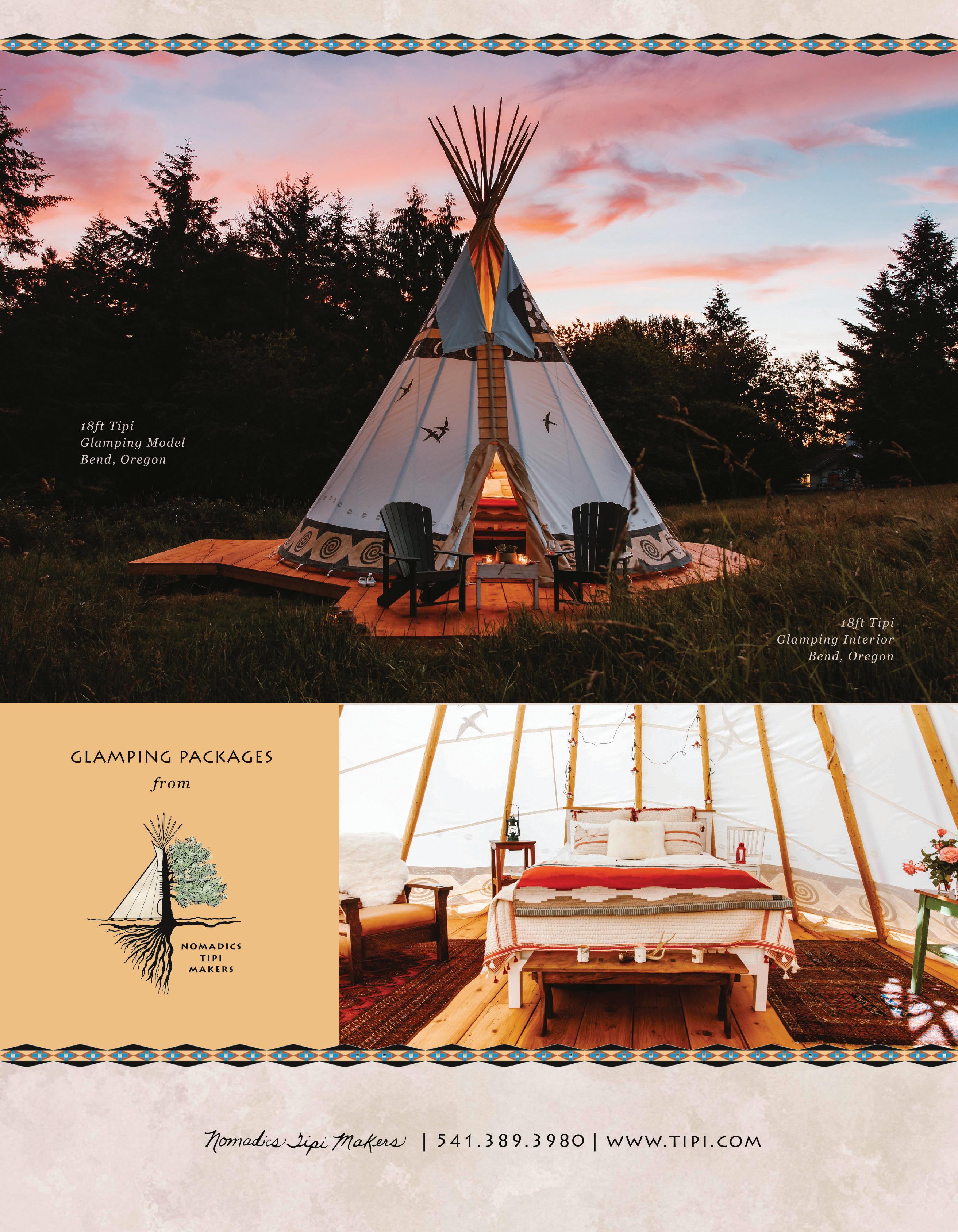
EVOLVE LODGING AND TIMBERHUT CABIN COMPANY ANNOUNCE GROUNDBREAKING COLLABORATION TO DEVELOP WHEELCHAIR ACCESSIBLE ACCOMMODATIONS

In a significant move towards inclusivity and accessibility in the outdoor industry, EVOLVE Lodging and Timberhut Cabin Company, in conjunction with ELEV8 Architecture, have announced a pioneering partnership to fully develop wheelchair-accessible lodging accommodations. This collaboration aims to set a new standard in the Outdoor Hospitality lodging industry, ensuring that the great outdoors is accessible to all, regardless of mobility limitations.
Addressing a Crucial Need
The CDC’s National Center for Health Statistics monitors the health and disability status of the U.S. population, reporting that approximately 61 million adults in the United States live with a disability that affects major life activities, with mobility being the most common issue. This represents about 26 per cent of the adult population, underscoring the importance of accessible travel accommodations. The collaboration between EVOLVE Lodging and Timberhut has committed to addressing the need for accessible accommodations in the creation of the EveryOne Cabin, slated for release in October 2024.
The Outdoor Hospitality Industry and the Market Potential
As reported by the Outdoor Recreation Roundtable, the industry has become a $1.1 trillion market as regards to a total economic output (2.2% of GDP), with an increasing number of Americans seeking outdoor experiences. However, a significant portion of potential clients have been underserved due to the lack of ADA-compliant accommodations. This collaboration between EVOLVE Lodging and Timberhut Cabin Company aims to cater to this market by providing high-quality, accessible lodging options.
Innovative, Accessible Lodging Solutions
The partnership will focus on designing and constructing accommodations that not only meet but exceed the Americans with Disabilities Act (ADA) standards. Features will include wheelchair-friendly design, accessible bathrooms with appropriate fixtures that accommodate a variety of mobility devices, furniture thoughtfully chosen for flexible ease of use, and kitchens designed for usability by all. Moreover, the goal is to extend this compatibility to the outside living
area, with an emphasis on decks, seating, outdoor kitchens and other upscale amenities which are accessible and enjoyable by all. ‘’We are joining forces with Julienne Dallara, Ms. Wheelchair California and a renowned consultant and educator, to make sure we have addressed every single design element thoroughly, in creating the best possible experience” said Michelle Oliver, President of EVOLVE Lodging.
A Move Towards Inclusivity
“This collaboration is more than just about building accessible cabins; it’s about creating inclusive experiences for all individuals, enabling them to explore and enjoy superior accommodations without the inherent traditional barriers,” said Randy Hendrickson, CEO of EVOLVE Lodging. Brooks Anderson, Founder of Timberhut Cabin Company, added, “We are proud to be at the forefront of this significant shift towards inclusivity in the Outdoor Hospitality industry. Our goal is to ensure that everyone, regardless of their mobility, can create lasting memories while enjoying Timberhut’s commitment to design and construction excellence.”
glampingshow.us | Glamping Business Americas | 09 NEWS & PRODUCTS IF YOU HAVE ANY INDUSTRY OR PRODUCT NEWS TO SHARE, PLEASE CONTACT: STEPH@UPGRADEPUBLISHING.COM
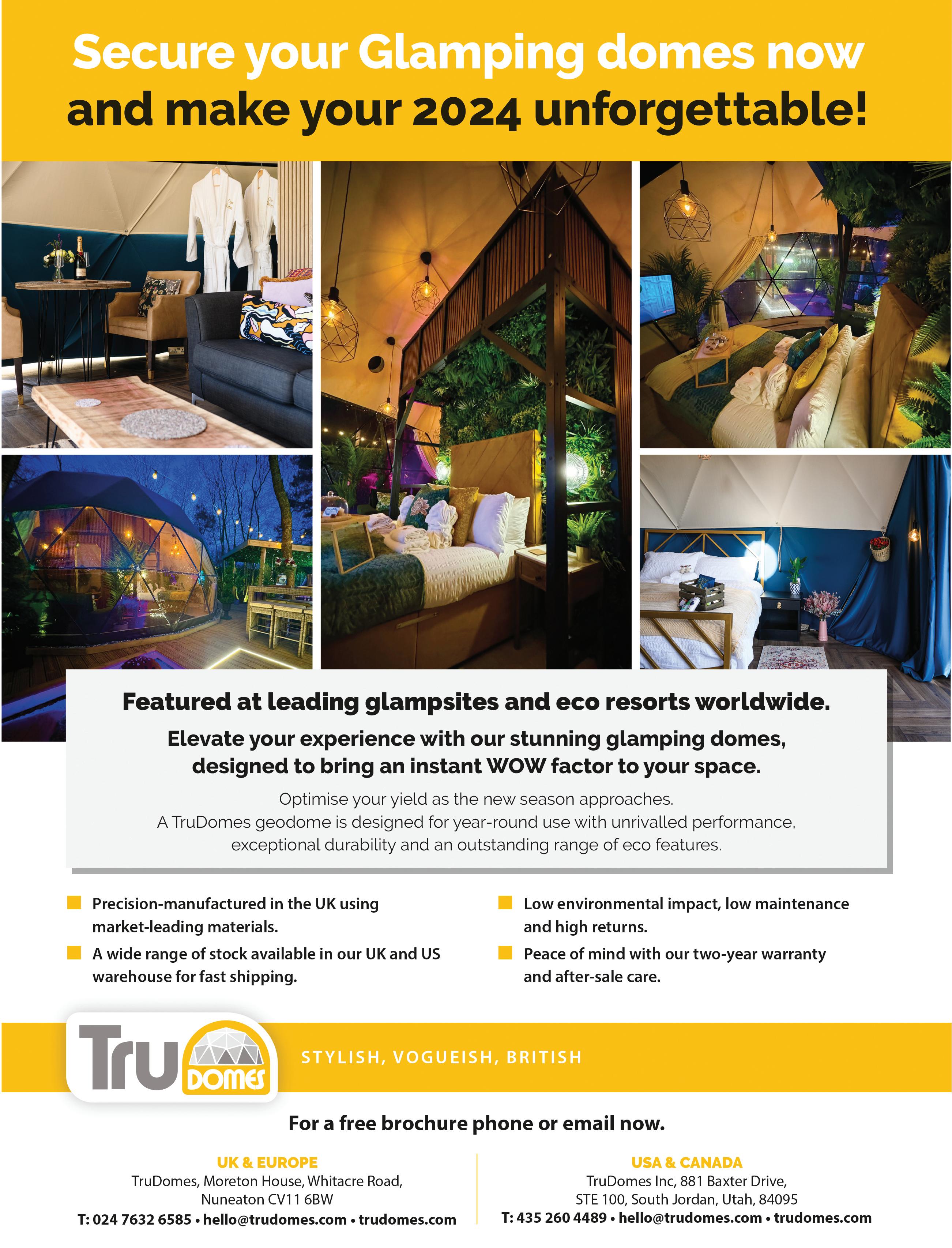
Letter from AGA founder: INTRODUCING AMERICAN GLAMPING ASSOCIATION
COMMITTEES
https://americanglampingassociation.net/aga-committees
BY RUBEN MARTINEZ
We are very excited to announce the American Glamping Association Committees – an innovative initiative dedicated to nurturing collaboration and progress within the thriving glamping industry. Our aim is to ensure that the AGA remains a community-driven organization and at the heart of this initiative lie three dynamic committees: Professional Development, Manufacturers, and Standards. These committees serve as the cornerstone of our collective efforts, each focusing on a critical aspect of the glamping landscape.
Professional Development Committee: Empowering Glamping Professionals
The Professional Development Committee is committed to advancing the skills and expertise of individuals and organizations within the glamping community. Through initiatives like The Glamping Operators Certificate, workshops, seminars, and networking events, we empower professionals to move their businesses forward through professional development. Here are the key objectives guiding the committee’s endeavors:
• Curriculum Development: Creating educational materials tailored to the evolving needs of glamping professionals.
• Resource Development: Establishing a comprehensive library of resources to support ongoing professional growth.
• Speaker Selection: Inviting industry experts to share valuable insights with the community.
• Continuing Education Opportunities: Recommending additional learning opportunities for skill enhancement.
• Collaboration with Industry Partners: Forming partnerships to offer joint professional development initiatives.
• Workshop and Seminar Coordination: Hosting sessions on relevant topics such as hospitality management and sustainability practices.
• Feedback Collection: Gathering input to enhance the effectiveness of professional development initiatives.

• Mentorship Programs: Pairing seasoned professionals with newcomers to provide guidance and support.
• Promotion and Outreach: Raising awareness of professional development opportunities through various channels.
Manufacturers Committee: Innovating Glamping Equipment
The Manufacturers Committee drives innovation in glamping structures and products by uniting manufacturers, designers, and innovators to push the boundaries of development while collaborating on specific initiatives to create stronger inroads for safer and quicker deployment. Here are the core focuses of the Manufacturers Committee:
• Setting Standards: Establishing benchmarks for glamping structures and amenities to ensure quality and sustainability.
• Innovation: Encouraging the development of cutting-edge technologies and materials to enhance the glamping experience.
• Collaboration: Facilitating partnerships between manufacturers and other stakeholders to create innovative solutions.
• Quality Control: Implementing measures to uphold the highest standards of quality in glamping equipment.
• Environmental Sustainability: Researching eco-friendly practices in manufacturing processes and product design.
• Market Research: Conducting studies to understand evolving consumer preferences and trends.
• Regulatory Compliance: Ensuring adherence to relevant regulations and safety standards.
Standards Committee: Upholding Excellence in Glamping
Lastly, the Standards Committee is dedicated to maintaining excellence and integrity within the glamping industry. By establishing and navigating industry standards, this committee ensures consistency and trustworthiness

across the sector. Here are the core focuses of Standards Committee:
• Promoting Safety and Security: Safety is paramount in the glamping industry. The committee works tirelessly to develop protocols and procedures that prioritize the well-being of guests, staff, and the environment, while also addressing emergency preparedness and risk management.
• Exploring Standards and Compliance: The committee is committed to setting comprehensive benchmarks and guidelines to maintain high-quality standards across all aspects of the glamping experience, including accommodations, amenities, and services.
• Enhancing Guest Experience: Central to the committee’s mission is enhancing the overall guest experience. By continually refining and improving standards, the committee aims to elevate the quality of service, amenities, and accommodations offered by glamping operators, fostering guest satisfaction and loyalty.
• Facilitating Continuous Improvement: The Standards Committee is dedicated to fostering a culture of continuous improvement within the glamping industry. Through ongoing evaluation, feedback mechanisms, and collaboration with industry stakeholders, the committee seeks to identify areas for enhancement and implement strategies for positive change.
The American Glamping Association Committees are committed to driving positive change and fostering growth within the glamping industry. Whether you’re a seasoned professional, a manufacturer, or a passionate stakeholder, we invite you to join us on this exciting journey of innovation and collaboration. Together, we can elevate the glamping experience for all. Stay tuned for updates and opportunities to get involved as we embark on this transformative endeavor!
For more info please contact: info@americanglampingassociation.net
glampingshow.us | Glamping Business Americas | 11

RANCHING IN STYLE
Nestled amidst the picturesque landscapes of Paintrock Canyon, Ranchlands offers a unique blend of luxury and wilderness through its glamping experiences. At the heart of Ranchlands’ philosophy lies the notion of “working together to live with the land,” shaping every aspect of the guest experience.
Glamping Business Americas speaks to Tess Leach, Business Development at Ranchlands to find out how the impact of their work extends beyond its campgrounds, reaching into the local community and beyond.
Can you provide us with an overview of Ranchlands’ philosophy and how it influences the glamping experience offered at your locations? Our philosophy can be distilled down simply to “working together to live with the land,” and everything that we do is a reflection of this.
Tent camping experiences for Ranchlands place guests in the heart of nature — set alongside the Paintrock Creek in the Paintrock Canyon, all meals are prepared over a fire and enjoyed al fresco. Experiences immerse guests in ranching, however they are comfortable, and aim to open their eyes to the harmony of a working landscape.
How does Ranchlands differentiate its glamping offerings from traditional camping experiences? Our tent camping experiences are not lacking any creature comforts. Plush beds with down comforters, antique dressers and chests, colorful woven rugs. It’s the best of both worlds when

you can unzip your windows and have fresh air and birdsong mixed with the creek, and all the comforts of home. The furnishings were done in partnership with Filson.
Can you describe the unique accommodations and amenities that guests can expect when staying at Ranchlands’ glamping sites? Each tent is privately placed within its own spot by the creek, tucked behind a tree, row of bushes or other natural barrier. We spend days mapping out the camp each summer and picking each spot so that it’s perfect. The tents are connected to the kitchen and dining area by a lighted pathway that
12 | Glamping Business Americas | glampingshow.us
Photo @dellpickles
Photo: Madeline Jorden @madelinejorden
comes on at dusk, and guests are given lanterns to walk back to their tents.
What inspired Ranchlands to incorporate glamping into its offerings, and how has it evolved over time?
We ran a tent camp for 2 seasons before covid much because it was a solution to expanding our hospitality operation. After covid, when we decided to bring the camp back, we found that people were inspired to disconnect from their daily lives and get back to nature and basic human interaction and it’s been the perfect way to offer that to people.
How does Ranchlands integrate sustainability and eco-friendly practices into its glamping operations?
All of the food is sourced locally—either meat from the ranch or from the local community and vegetables grown in the Big Horn Basin. All bath products are biodegradable, etc. The programming is educational by nature and teaches guests about ranching as a conservation tool.
Can you share any memorable guest experiences or stories from Ranchlands?
A highlight is having coffee or cocktails with the horses who graze right next to camp, and sunset rides to watch the light set over the red cliffs to the west of camp
What measures does Ranchlands take to ensure guest safety and satisfaction during their glamping experience?
Staff is all wilderness first aid trained, go through rigorous weeklong training with local experts and staff that has been doing this for 20+ years. The guest to staff ratio is 1 programs person per group of guests, so each group has personalized attention and an experience that is catered to their needs.
What activities and excursions are available to guests at Ranchlands’ glamping sites, and how do they enhance the overall experience?
Firstly, guests have the opportunity to explore Lumen or Paintrock Canyons either on horseback or on foot. This allows them to immerse themselves in the stunning natural landscapes, taking in the rugged beauty of the canyons and enjoying the serenity of the surroundings.
For those interested in ranching and agricultural practices, they can partake in a unique experience by riding alongside the cattle herd. This not only provides insight into planned grazing and ranch management but also offers a hands-on
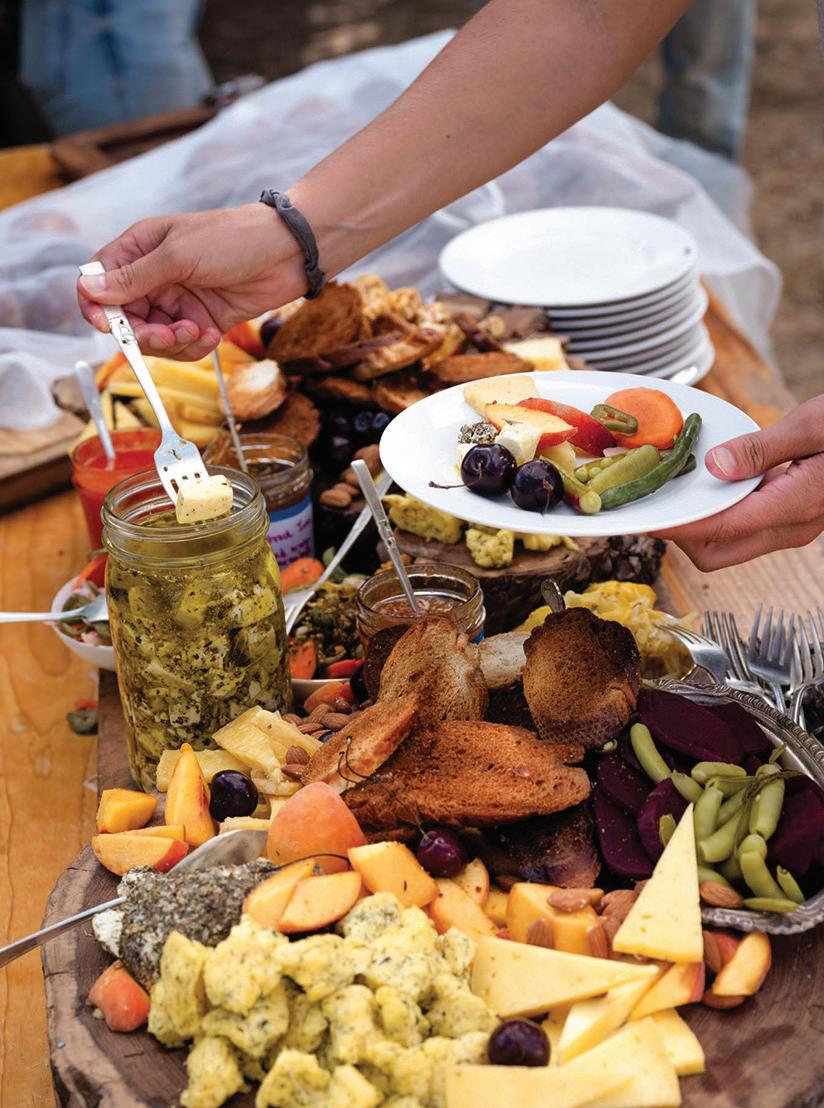
opportunity to learn about the daily operations of a working ranch.
Additionally, guests can delve into the region’s rich history by visiting the nearby Medicine Lodge Archaeological Site, where they can marvel at 2,000-year-old Native American petroglyphs. This cultural excursion adds depth to the glamping experience, allowing guests to connect with the land and its indigenous heritage.
For outdoor enthusiasts, fly fishing in one of the many fishing holes near the camp is a popular activity. Whether novice or experienced, guests can enjoy the thrill of angling in pristine waters, surrounded by the tranquility of nature.
How does Ranchlands engage with the local community and support regional conservation efforts through its glamping operations?
At Ranchlands, engaging with the local community and supporting regional conservation efforts are


glampingshow.us | Glamping Business Americas | 13
Ranchlands Collective Inaugural Gathering at Paintrock Ranch, Wyoming
This picture and above, photos by Rebecca Stumpf, @rebeccastumpf
Photo: Claudia Landreville and Ranchlands



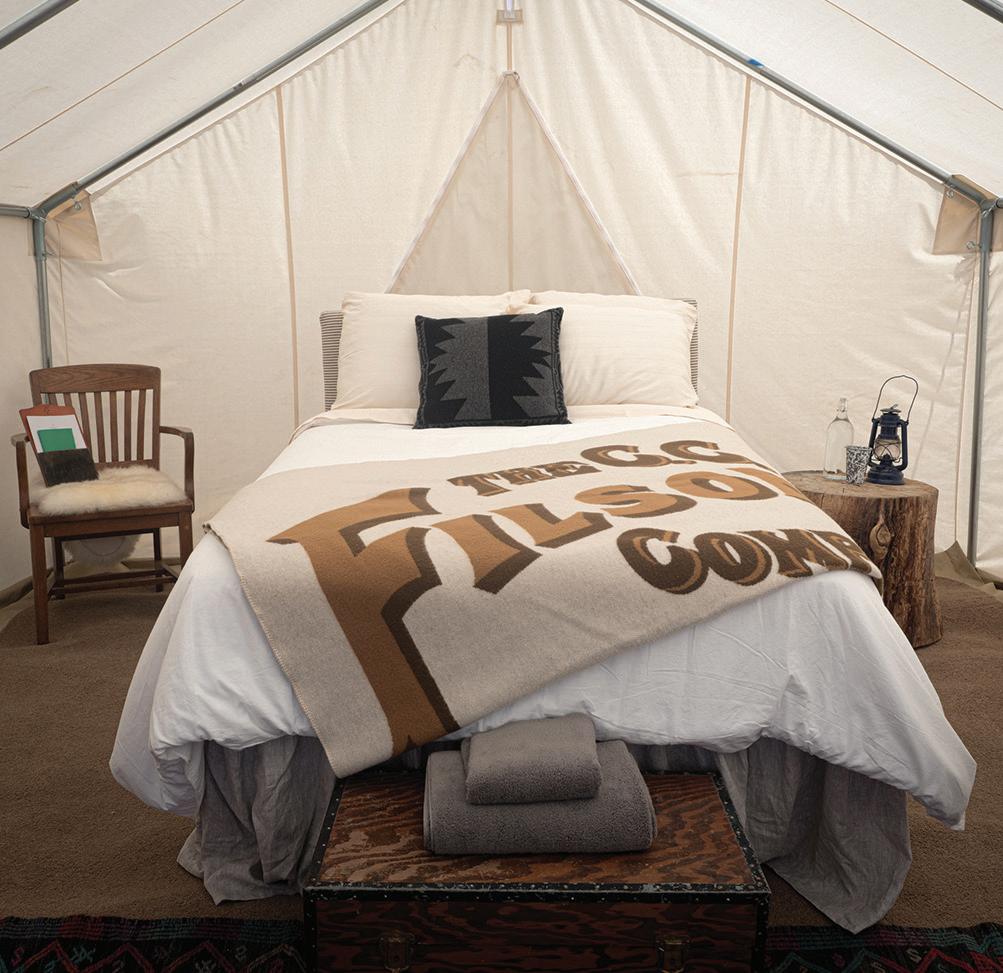
fundamental aspects of our glamping operations.
Firstly, conservation is ingrained in our operations, with our ranching business producing conservation outcomes akin to the production of meat. We prioritize sustainable land management practices that benefit both the environment and the local ecosystem. Our commitment to conservation extends beyond words, as evidenced by our actions on the ground.
Furthermore, Ranchlands is proud to be certified through the Audubon Conservation Ranching program. This certification underscores our dedication to wildlife habitat conservation and sustainable ranching practices. By aligning with reputable conservation organizations like Audubon, we demonstrate our commitment to environmental stewardship.
In addition to conservation efforts, we actively engage with the local community by providing employment opportunities and sourcing food locally for our programs. By collaborating with local businesses and residents, we contribute to the economic vitality of the region while fostering community connections and support.
Moreover, Ranchlands is deeply involved in community outreach and education initiatives. We host and participate in field days and workshops in partnership with organizations such as HMI, Audubon, Quivira, and WLA. These events serve as platforms for knowledge exchange, where local residents and stakeholders can learn about sustainable land management practices, wildlife conservation, and ranching techniques.
Overall, Ranchlands’ glamping operations are

not just about providing a luxurious outdoor experience; they are also about actively contributing to the well-being of the local community and the preservation of the region’s natural heritage. Through our commitment to conservation, community engagement, and education, we strive to make a positive impact that extends far beyond our campgrounds.
glampingshow.us | Glamping Business Americas | 15
This picture and below, photos by Rebecca Stumpf, @rebeccastumpf
Photo: Madeline Jorden @madelinejorden
Photo @dellpickles
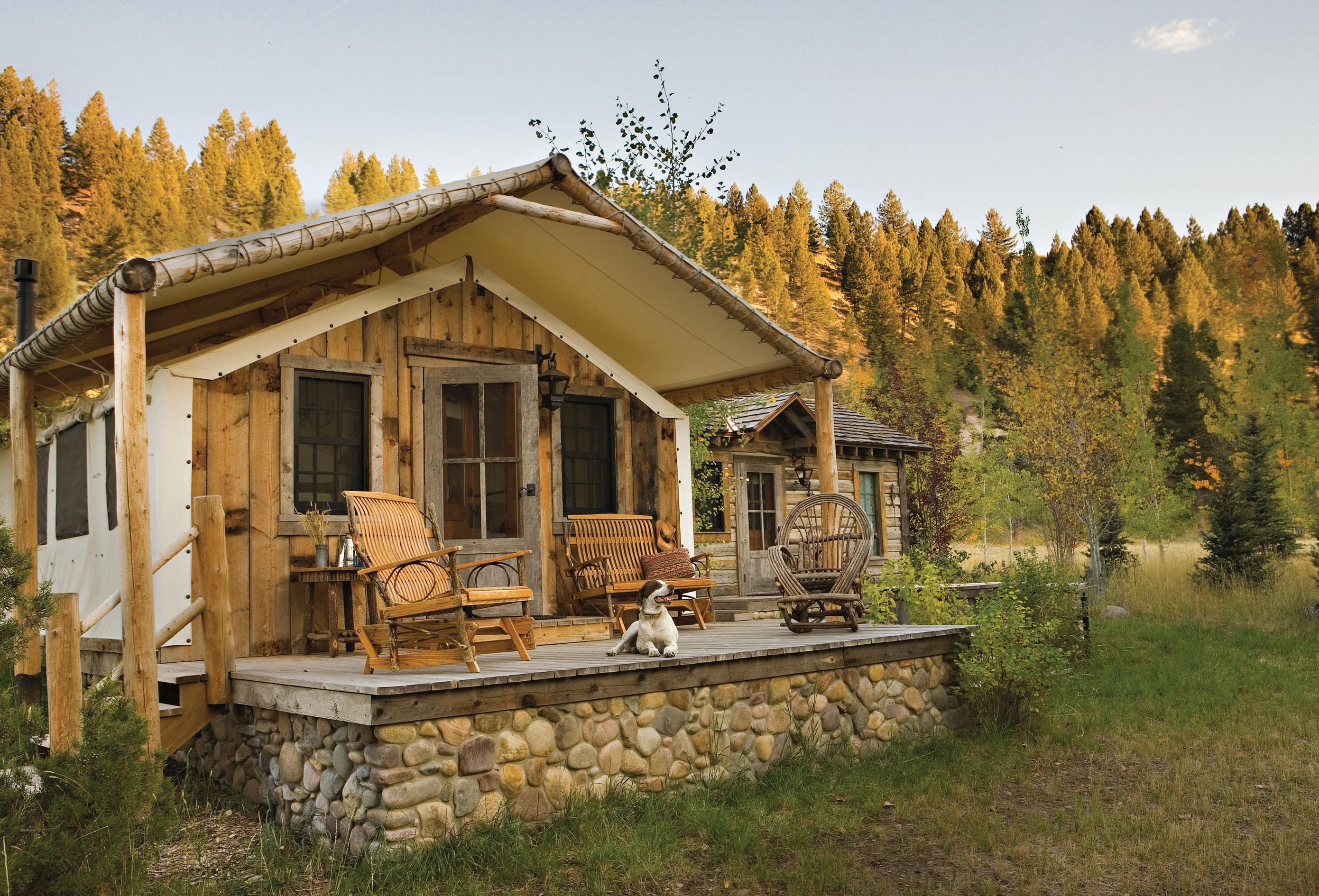

SHOULD GLAMPING BE GOING TO THE DOGS?
BY MIKE GAST, THE ‘IMI OLA GROUP
Dogs have improved their station in life dramatically since I was a kid.
Back before Richard Nixon got in trouble, lots of families had dogs as pets, and we loved them...like pets. They might ride around in the back of a pickup truck once in a while, but we certainly didn’t consider taking them along for a romp through the grocery store or –God forbid – on a family vacation.
Somewhere between the aging of the Baby Boomers and the coming-of-age of millennials, dogs became “fur babies” and “grand dogs” with all of the rights and privileges you’d grant to a sticky-fingered toddler.
Dogs are welcomed nearly everywhere now. “Dog parents” would no more consider leaving Fido at home or at a boarding kennel than they would condone leaving their 10-year-old home alone for a few weeks.
“North America’s campgrounds are pet utopias. Owners are dialing things up by adding massive pet playgrounds, pet-centric activities like ‘painting with paws’ sessions and even site-delivered ‘barkuterie boards’ of doggie treats on arrival.”
In the camping industry where I toiled for two decades, being “pet friendly” was originally a differentiator for campgrounds that could lead to
a lot of extra business. But it wasn’t long before nearly every park at least allowed dogs on the premises, as long as they stayed on a leash and didn’t disrupt things too much.
The explosion in interest in attracting the pet set is no accident. Kampgrounds of America Inc. has been closely tracking traveling with pets since its first North American Camping Study in 2012. That year, the survey found about 36% of campers were traveling with pets. KOA’s latest data, compiled by Cairn Consulting Group, found that number had ballooned to 64% by 2020.
Along the way, park owners saw the wisdom of adding a few amenities for pooches, mostly in the form of more-and-fancier off-leash pet parks. Now, it’s hard to find a campground without at least one off-leash park. KOA Inc. requires every one of its 520 locations to have at least one 1,000-square-foot fenced off-leash park
16 | Glamping Business Americas | glampingshow.us
The Trapper Cabin Tent at the Ranch at Rock Creek in Philipsburg, Montana includes a heated floor to ensure dog glampers keep their paws toasty warm. (Photo by Karyn Millet for The Ranch at Rock Creek).

available. KOA officials say trends now show most park owners are going well beyond that minimum requirement.
Today, North America’s campgrounds are pet utopias. Owners are dialing things up by adding massive pet playgrounds, pet-centric activities like “painting with paws” sessions and even site-delivered “barkuterie boards” of doggie treats on arrival. Both KOA and Great Escapes RV Resorts have added private, fenced off-leash areas to RV sites and cabins so fur babies have the run of the place.
There’s even a very successful park called 4 Paws Kingdom Campground & Dog Retreat in Rutherfordton, North Carolina that has seven off-leash pet parks and welcomes dogs of all breeds and sizes – but won’t allow anyone under 18 on the property.
Imagine. A place that will welcome your three pit bulls with open arms but wants nothing to do with your human kids.
GLAMPING & PETS
Which brings me to the current state of pets and glamping. It’s likely safe to say that while many glamping facilities currently consider themselves “pet friendly,” most haven’t yet dialed up their pet-centric offerings to match the emerging expectations of travelers with dogs.
To be fair, there isn’t much glamping-specific data out there yet. The Glamping Americas 2023 State of the Industry Report didn’t ask glamping owners or potential owners about pet offerings, but the report authors say that omission will likely be corrected in future iterations of the report.
Glamping operators have a lot of decisions to make when it comes to serving four-legged guests. Are their soft-sided tent accommodations suitable for off-leash pups? Will owners be allowed to leave their dogs in their accommodation while
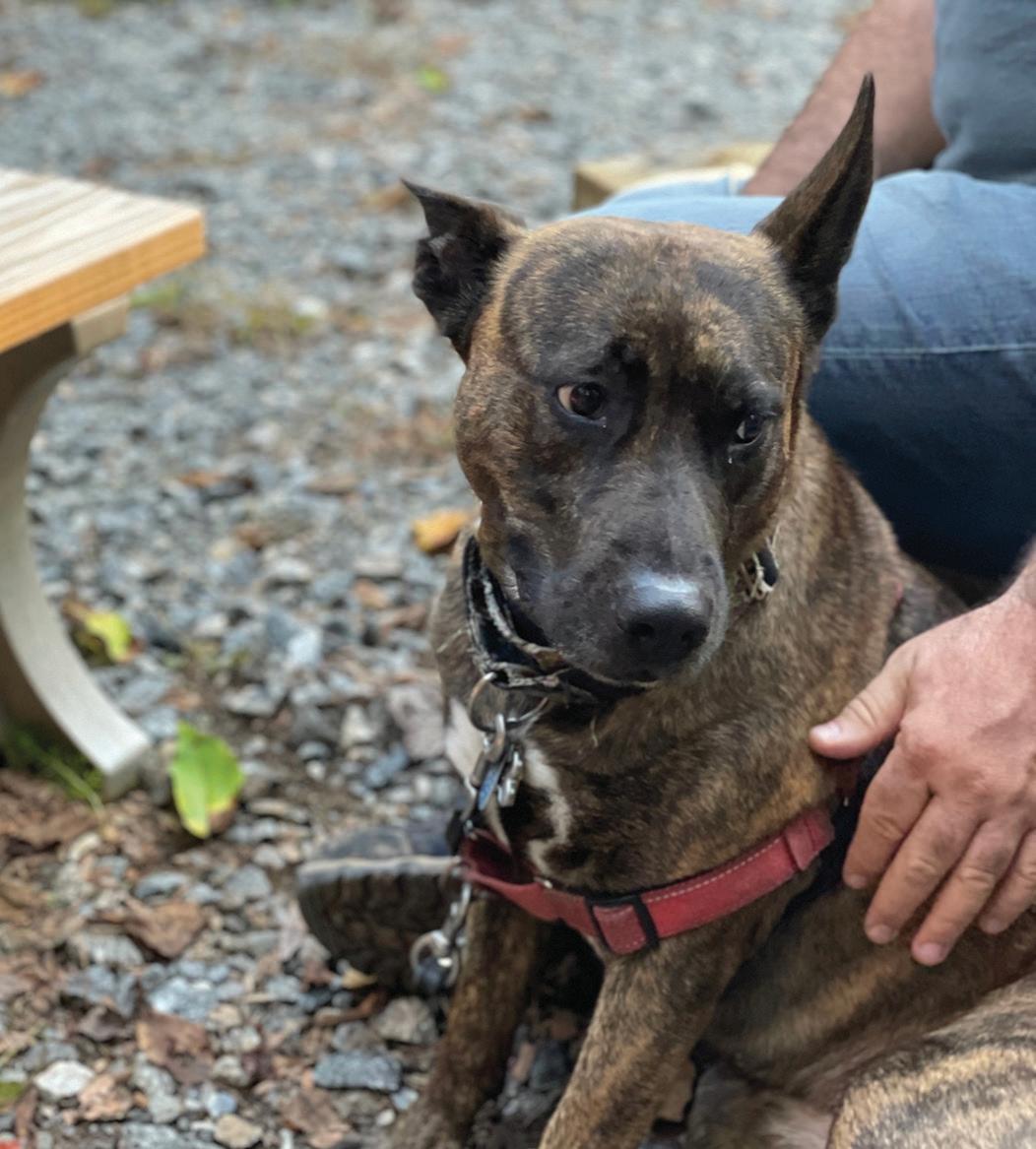



they explore the area? What breed, size, and/or inoculation restrictions will you have in place? Will your park include dog-friendly trails, fenced off-leash areas, or even doggie day care services?
Some campground owners I’ve talked to say KOA’s number of 64% traveling with pets is low. They say it could be closer to 80% in 2024. It’s reasonable to believe that number will hold true with the glamping crowd, too. So, glamping operators who decide to cater to pet lovers open themselves to a huge market with vast revenue potential.
Some glamping operators are ahead of the pet game. The Ranch at Rock Creek in Philipsburg, Montana, for instance, offers glamping tent cabins with heated floors to keep pets comfortable, as well as food bowls and cushy beds. The Ranch
glampingshow.us | Glamping Business Americas | 17

“If you make it difficult to bring a dog along, or worse that you claim the “dog friendly” label but don’t provide a suitable top-notch pooch experience, they won’t be back.”
welcomes dogs of any breed or size, and upcharges guests an additional fee of $100 per night for up to two pets. That’s on top of a regular nightly rate that starts at $900.
Glamping has always been about the special experience glamping operators provide their guests. That extends to pets. If you make it difficult to bring a dog along, or worse that you claim the “dog friendly” label but don’t provide a suitable top-notch pooch experience, they won’t be back. Below are a few things to consider:
TIPS FOR GLAMPING OWNERS
• Do your research. Start asking your pet-owning guests now what they want and expect when they stay with you. This is your best indicator of where to make your investments.
• Know what your insurance company requires. Some may want to include breed or size restrictions.
• If you decide to go after the pet market, go the extra mile. Add dog bowls, beds, and extra leashes to your accommodations and greet your four-legged guests with treats to get off to a good start.
• Have a clear-but-friendly list of requirements for pet owners and be sure to communicate the rules fully both before check-in and after. Make it clear that aggressive animals and their owners won’t be tolerated.


• Consider adding a private fenced off-leash space to individual glamping sites. Glampers will love it and will be more than willing to pay a premium for the amenity.
• If you have a store, stock it with the necessary pet supplies and fun toys, including first-aid supplies for dogs that include bandages, antiseptic wipes and tick removal tools. Merch, including glamping-branded doggy shirts and bandanas, can generate a nice, steady revenue stream.
• Take a close look at your accommodations to ensure potential dangers are kept to a minimum. That includes small spaces where pets could get trapped, entangled in hanging electrical cords, or come across small items that could be swallowed.
• Provide each glamper with pets a complete guide of dog-friendly activities, including area walking trails and swimming holes. Include a list of emergency services, including the nearest available veterinary care and emergency phone numbers. Also keep pets in mind when designing your foul weather emergency plans.
• Glamping means the outdoors, and the outdoors includes wildlife. Be prepared to strictly enforce a leash rule to keep dogs from chasing rabbits, squirrels, or deer.
• Most glamping facilities include an outdoor fire experience for guests. Be sure your fire experience design takes pet safety into account.
• Include plenty of waste bags and disposal stations on your park. Most owners are good about picking up after pets, but it will take vigilance on your part to ensure nobody has to tiptoe around a mess.

• Pets are generally in unfamiliar territory when glamping, and sooner or later one will go missing. Have a plan in place to assist owners in reuniting with their pets should they wander off.
Recognize that your pet-owning guest isn’t just looking for a glamping vacation. They want an adventure that includes their dog. Done correctly, glamping owners have an opportunity to capture the imagination – and the burgeoning market – of dog-friendly travelers for years to come.
Mike Gast is a journalist and public relations professional with a career spent in media newsrooms as well as 20 years as the Vice President of Communications for Kampgrounds of America Inc. He now puts his decades of experience to work for glamping and camping operators as the President of the ‘Imi Ola Group, a public relations, marketing and content production firm located in the heart of America in Omaha, Nebraska. You can reach him at mike.imiolagroup@gmail.com.
glampingshow.us | Glamping Business Americas | 19

HARMONIZING LUXURY AND NATURE: HKS AND AUTOCAMP’S BOLD APPROACH
Leading architecture and design specialist HKS collaborated closely with top glamping brand AutoCamp on its Joshua Tree and Zion locations. Glamping Business Americas spoke to the designers about how they approached the projects.
Given the iconic locations and the iconic Airstream accommodations –designing for Autocamp is certainly a unique brief and one which HKS appreciated required bold concepts blended with fine balance.
“There was an openness (from both parties) to push the boundaries of concept design; responding to the requirements of targeted guest personas, within a highly sensitive natural environment and within the commercial framework necessary to achieve economic sustainability alongside environmental sustainability. says Michael Strohmer, Regional Practice Director, Hospitality and a Partner at HKS.
“Travelers are craving nostalgia, and the feeling they get when they encounter things of the past are contributing factors to the growing desire for
“As designers, our challenge is to meet the emotional needs but also address the physical requirements.”
travel where they can interact – in this case with the Airstreams but most importantly it needs to feel authentic and not too commercialized.
“As designers, our challenge is to meet the emotional needs but also address the physical requirements; after all, it is modern day times now and they want to have both the feeling of walking down memory lane combined with having access to the conveniences you’d find in a more typical, or luxury hotel accommodation. The notion of a “down to earth” approach to travel but done in an
elevated manner and with a sophisticated delivery in the details. We at HKS say “challenge accepted!” explains Darcy Lawrence, Principal and Strategy and Development Director, Hospitality at HKS
The extreme climate and aestheticism of Joshua Tree, with its Joshua trees and mountain ranges, set the stage for its design. The HKS design team used elements of passive design to give each guest a deeper connection with the environment.
“For example, the building’s placement helps shelter guests from the winter winds while taking advantage of the summer breezes, utilizing shading elements on all facades,” points out Michael. “In addition, the resort’s design focused on creating memories for visitors while staying grounded in nature. The architecture nods to the eclectic character of the town where it is located, using materials meant to weather in
20 | Glamping Business Americas | glampingshow.us
Photos by Matt Kisiday
AutoCamp Zion
place and improve with age as they blend into the natural landscape.”
“AutoCamp’s design philosophy emphasizes uniqueness tailored to each location, minimal environmental impact, and a balance between individual spaces and communal areas to foster both privacy and social interaction,” he adds.
Ben Martin, Economics Practice Director, Advisory and a Principal at HKS explains, “A key feature of both AutoCamp Joshua Tree and Zion that sets them apart from a traditional camping resort is the inclusion of attractive central clubhouses and ‘gathering spaces’ designed to provide a quality setting for guests to share their experiences of the day with one another over a great meal or around a campfire.”

“The Clubhouse at AutoCamp Zion carries clean lines and utilizes natural materials like wood and stone. Serving as the heart of AutoCamp’s property, the low-slung structure blends seamlessly in with the surrounding Utah landscape, offering large expanses of glass inviting guests to enjoy uninterrupted views of natural beauty,” says Michael.
“The projects start with putting our minds through the guests’ experience from their point of arrival. We think about “What’s the right impression we want to make?” and that starts with the main building. Once that’s sited, we locate the individual accommodation and think about how we want them oriented to make them site specific and connected to nature,” he adds.
From an environmental perspective, both AutoCamp Joshua Tree and Zion have minimal contact with the Earth, making them less disruptive than a traditional hotel, and allowing nature to continue underneath each accommodation such as the Airstreams.
The AutoCamp Joshua Tree site is designed to limit its impact on the environment, incorporating low water use, native plantings, xeriscaping to minimize irrigation, on-site water treatment, a heavy reliance on solar power, and dark sky-compliant lighting to preserve the clear view of stars.
Ben Martin concludes on the increased appetite for luxury outdoor hospitality: “Market interest in, and demand for, remarkable guest experiences continue to rise and this trend, alongside a growing awareness of the benefits associated with the re-engagement with the ‘great outdoors’ suggests that HKS will see an increase in design


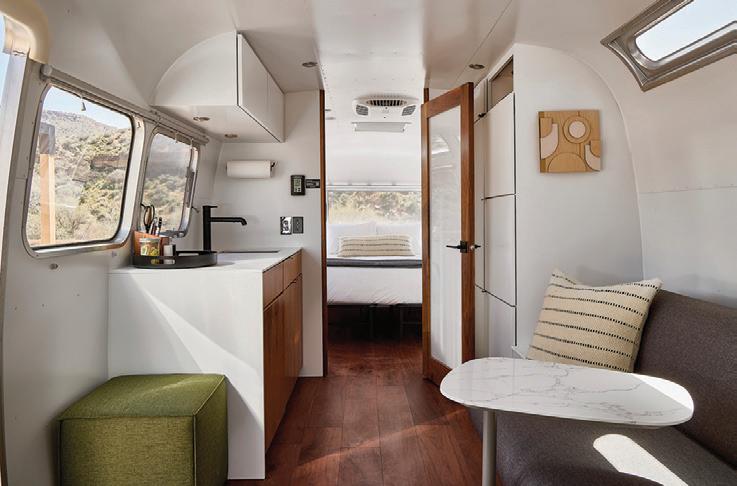
commissions focused on ‘off-grid lodging’. Each of these commissions with likely present a unique set of design challenges and will require collaboration between our environmental specialists and hospitality experts.”

glampingshow.us | Glamping Business Americas | 21
AutoCamp Joshua Tree
This picture and above: AutoCamp Joshua Tree
AutoCamp Zion
AutoCamp Zion
SIGNIFICANT LUXURY A journey of

better.best.bushtec


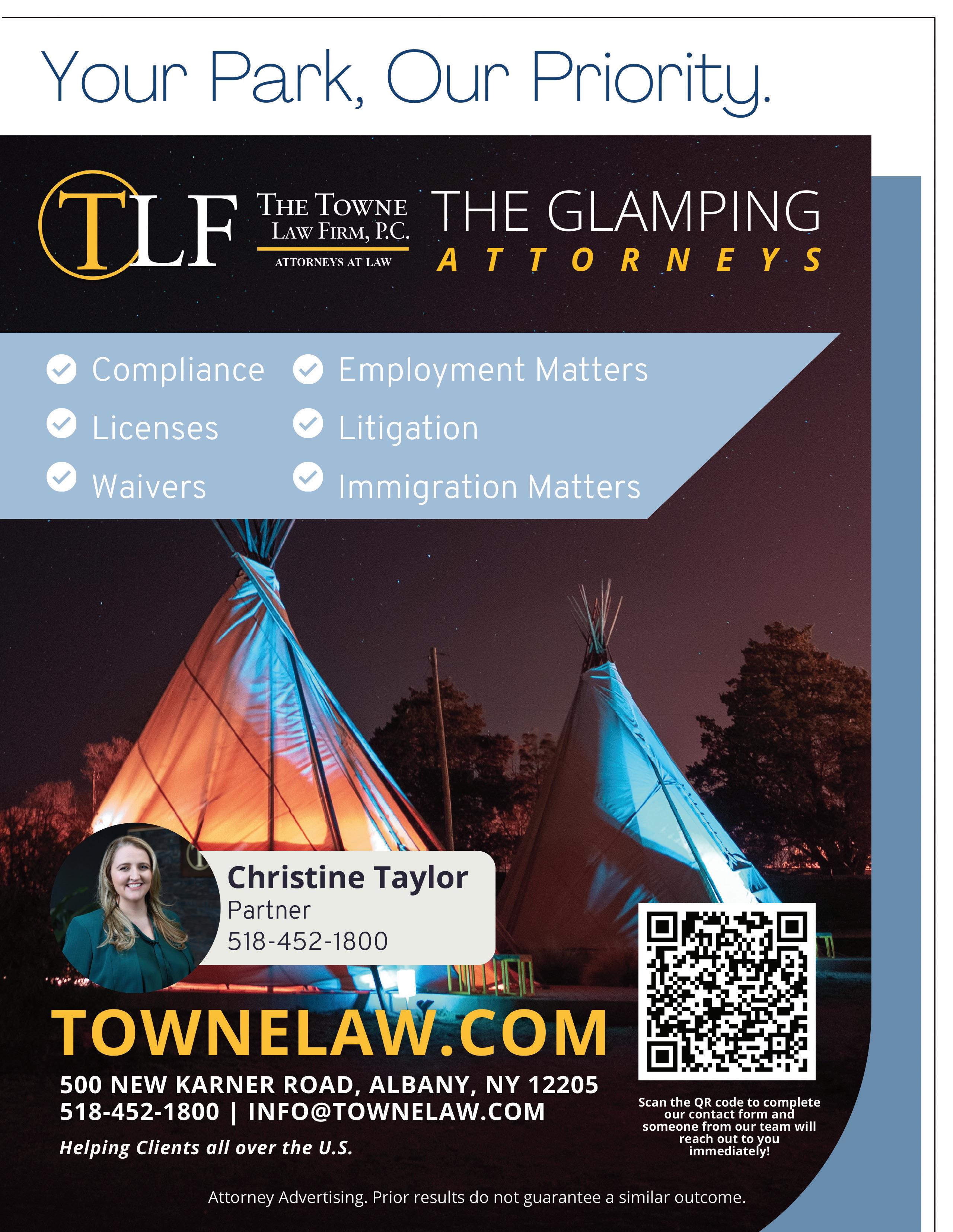
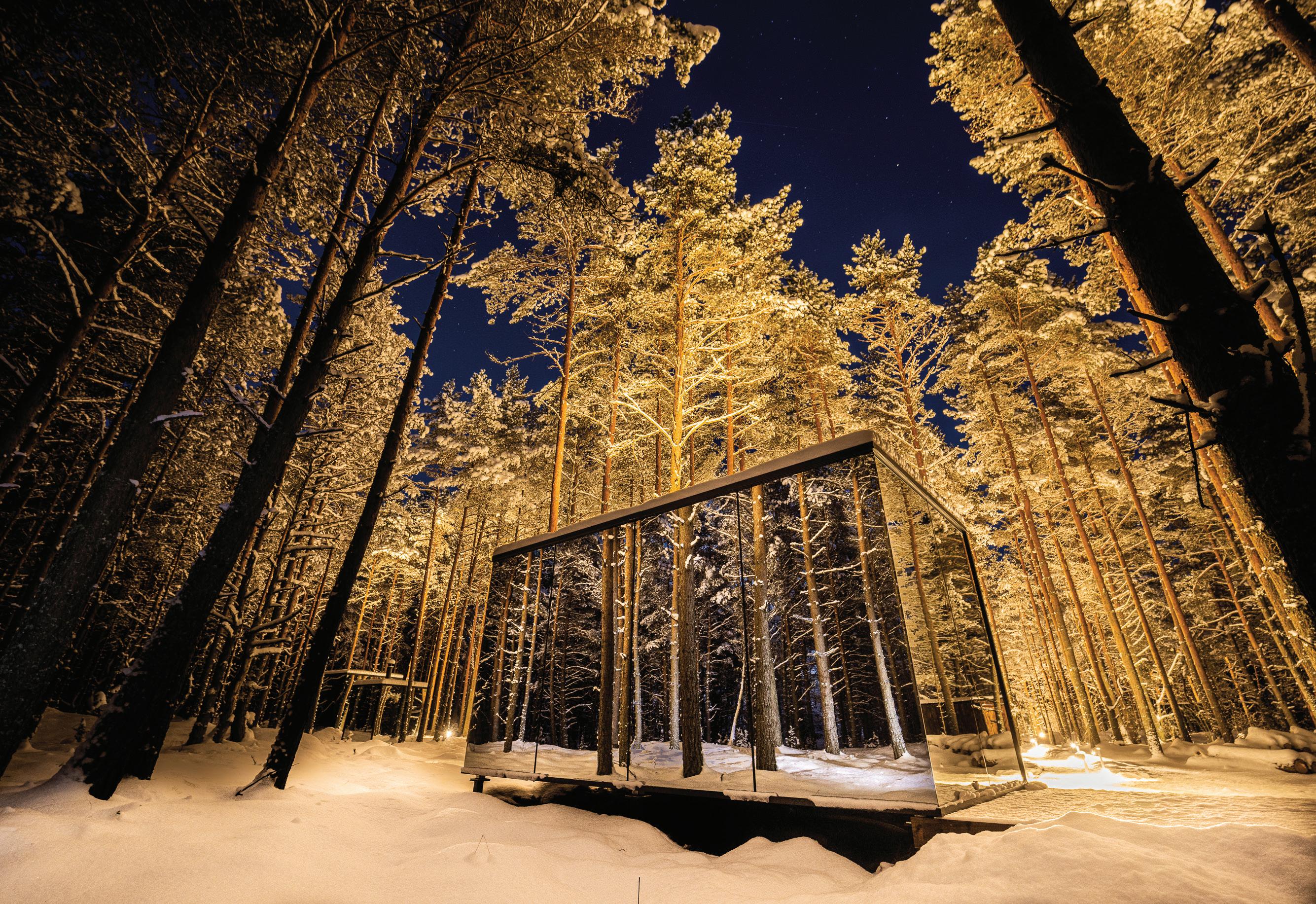

THE MAN IN THE MIRROR
Antonio Gonzales is President of ÖÖD USA – supplier of distinctive mirrored cabins and exhibitor at Glamping Show USA. However, Antonio’s background and enthusiasm for the glamping sector reaches even further. We caught up with him to find out more.
What is your background and how did you become involved in the glamping sector?
My journey into the glamping sector is like a thrilling adventure through the great outdoors! I’ve co-founded several start-ups that blur the lines between outdoor recreation and luxury hospitality. Think Taxa Outdoors, Cliffride, and Jupe – all born from a passion for
creating unforgettable experiences in nature. Plus, I’ve been a champion for outdoor ethics and conservation, serving on boards, such as Leave No Trace, that are shaping the future of how we interact with our planet.
What are your impressions of how the industry is developing?
The glamping scene in the US is like a wild frontier, ripe for exploration and innovation! Compared
glampingshow.us | Glamping Business Americas | 25


26 | Glamping Business Americas | glampingshow.us
“ÖÖD’s mirrored cabins are like the superheroes of glamping shelters – they can handle anything Mother Nature throws their way!”
to our friends across the pond in Europe and the bustling hubs of Asia, we’re just getting started. But that’s what makes it so exciting! It’s a patchwork of small to medium-sized businesses paving the way, while the big dogs of hospitality watch eagerly from the sidelines, waiting to pounce on the next big thing.
What attracted you to the ÖÖD product and philosophy and what were the reactions to the product at last year’s US Glamping show from customers?
Close your eyes and picture the epitome of luxury meets innovation – that’s ÖÖD! Its premium materials and sleek design had heads turning at last year’s US Glamping show. Customers couldn’t get enough of its blend of sophistication and
sustainability. Trust me, once you see it, you’ll be hooked too!
Are there any landscapes in which mirrored cabins would not be suited – for example could there by a fire risk in hot climates? Fire risk? Please! ÖÖD’s mirrored cabins are like the superheroes of glamping shelters – they can handle anything Mother Nature throws their way! From scorching deserts to frosty mountaintops, these babies are built to thrive in all four seasons, no matter the terrain.
Are there any specific maintenance requirements?
We provide a turnkey solution to our partners, minimizing maintenance needs despite the cabins’ predominantly glass structure. With 80% of the dwelling consisting of glass, our maintenance requirements are remarkably low, ensuring hassle-free operation for our partners.
What options are there if any for those who might want to customise their unit or run it off grid?
While we’ve explored different customization
options, our Signature Mirror Houses have proven to be the epitome of nature hospitality, resulting in profitable returns for owners from day one. Though customization is available, the success of our standardized design speaks volumes.
How important is it do you think to have a US manufacturing base and what does this mean for customers in terms of lead times and after sales? Establishing a US manufacturing base has been transformative for ÖÖD. Transitioning from being perceived solely as a European company to a global entity has created unprecedented demand, leading to a backlog of nearly 10 months. This shift has significantly reduced lead times and enhanced after-sales support for our US customers.
Where have you sited product in the US and what are your favourite projects? ÖÖD has made its mark across 12 states in the US, with notable locations including the Oregon coast, Smokey Mountains, and upcoming projects like Whitefish Montana. Each project holds its own charm, but witnessing ÖÖD’s integration into these diverse landscapes is particularly rewarding.

glampingshow.us | Glamping Business Americas | 27
JOIN A RISING TIDE
Nook Experiences launched just a few months ago and promises to create a brand for independent experiential properties. We caught up with Jake Pontius, co-Founder to find out more.
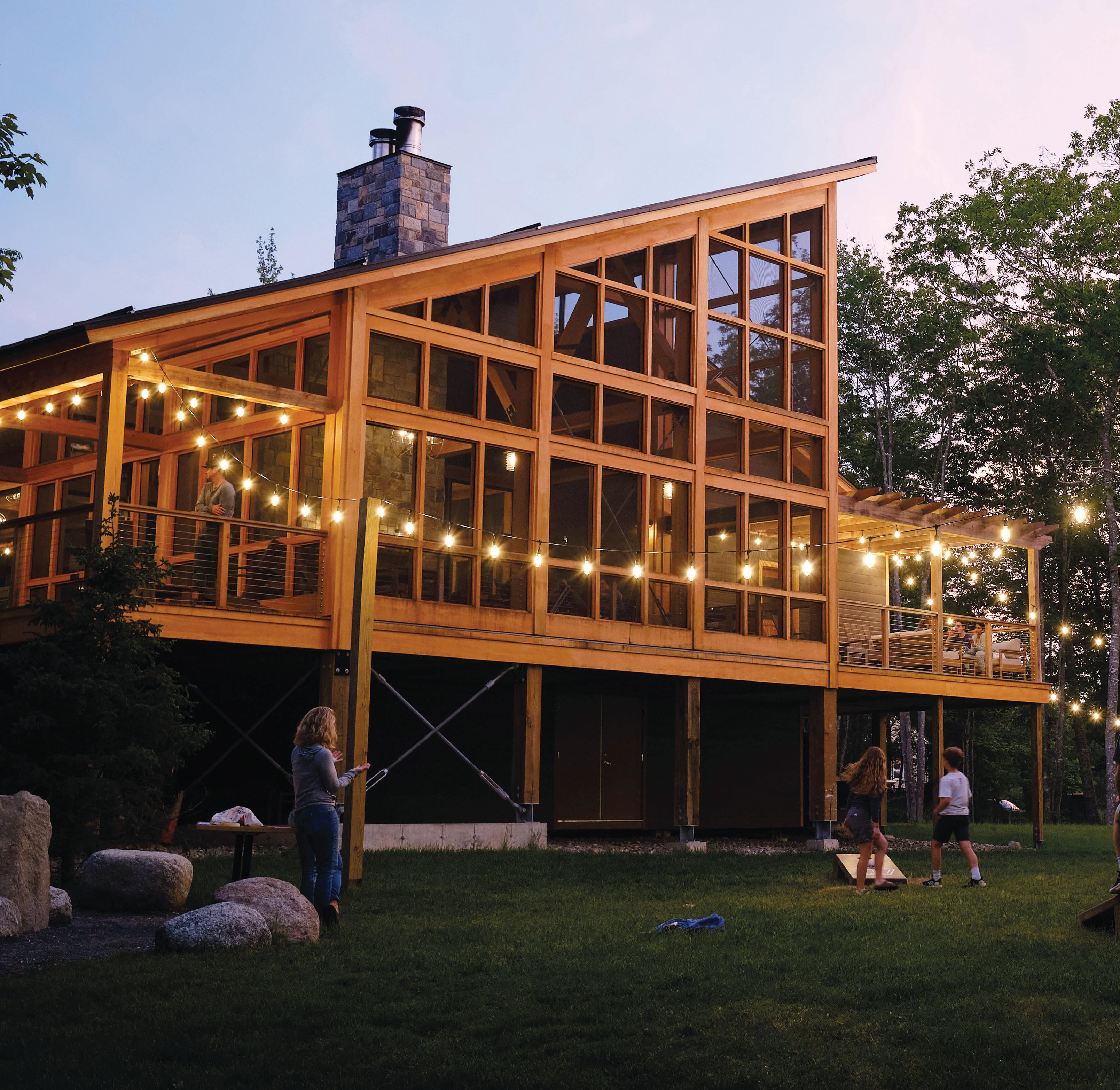
Tell us the background behind Nook – how did it come about?
Nook Experiences was born out of a number of experiences that hospitality legend Dave Pontius amassed over his 40+ year career that included strategic roles with Hilton, RCI, Wyndham and Bluegreen.
Sitting on the dock at a world-famous resort one day- a resort Dave had co-developed- he found himself fishing alongside one of the guests. In that moment, an authentic, genuine discussion sparked
between Dave and the guest. It was this realisation of connections forged through shared experiences that etched itself into Dave’s memory, sticking with him throughout the next 10 years leading up to the launch of Nook. In that time, glamping and outdoor experiential hospitality saw a substantial boom, leading to the concept of forming a brand with the goal of setting standards for the space that allow customers to feel comfortable knowing the quality level of experience they are entering into when they venture forth.
What is the ethos that drives you?
Nook is born from a passion for connecting people with the incredible beauty of nature. We understand that in today’s fast-paced world, finding moments of tranquillity and rejuvenation is vital to our long-term health. That’s why we curate exceptional properties at the gateway to the great outdoors, where guests can immerse themselves in the power of nature while retreating to a comfortable accommodation designed to enhance the overall experience.
28 | Glamping Business Americas | glampingshow.us

Tell us a little about the current portfolio?
Currently, we have 7 official member properties located in Texas, New York, Georgia, and Maine. All of the properties are independent and range from unique, one-of-a-kind accommodations to boutique hotels, but all share a distinctive relation to the great outdoors.
Where are you now in terms of size and where do you aim to get to?
Having just launched two months ago, we’re just
getting started! We feel the sky’s the limit. There are an incredible amount of new developments breaking ground. Additionally, many of the mom and pop properties are levelling up their operations. We feel like in a matter of a few years that this whole space will mature rather quickly.
Who is the Nook guest?
The Nook guest is any individual, couple, family, or group of people looking to form connections,
“To us, the core of a Nook property is a focus on experience, both the experience of the natural world as it relates to the properties’ location and the experience offered by the property itself.”
with others or just with the natural world, through shared experiences. They want to get away from the hustle and bustle, but don’t want to have to sacrifice creature comforts in order to do so.
What do you look for in a Nook property?
To us, the core of a Nook property is a focus on experience, both the experience of the natural world as it relates to the properties’ location and the experience offered by the property itself. It is one thing to stay in a place in touch with the outdoors, but a Nook property is one that allows guests to feel comfortable enough to truly engage with their stay. Trying new things. Exploring new paths. Making new connections. It is hard to truly unplug and embrace the moment without being comfortable enough on your own, personal level to have the confidence to simply go for it (whatever “it” may be). Places that get that concept and run with it are ideal fits for Nook.
In line with that concept, we feel that a premium should be placed on gathering spaces and shared amenities. This also lends itself to opening up the opportunity for group and event bookings where larger groups of people can connect with one another through shared experience. That level of comfort we look for allows folks to let their guard down and connect on a different level than in their everyday lives.
What are the benefits for properties in joining the Nook brand?
As a membership, one of the greatest benefits is what we like to call a rising tide effect. We consider Nook as a collective that benefits from the engagement of all member properties. The larger the umbrella, the larger the scope of our shared wins, which include a national marketing and PR presence, lead sharing, development and financing contacts, and, most importantly, collective knowledge. Since all of our properties are independent, they are all in various stages of life and have experienced unique setbacks, obstacles, and breakthroughs. Having a large
glampingshow.us | Glamping Business Americas | 29


30 | Glamping Business Americas | glampingshow.us

network to look to for advice, connections, and aid is an incredibly beneficial value add we bring. We develop relationships with group and event booking agencies in all types of fields, be it corporate events, weddings, adventure travel, wellness retreats, etc., by doing outreach and attending conferences that individual sites otherwise wouldn’t have the resources to do themselves. By being a single entity with a portfolio of properties, we simplify the relationship thus making it easier for these various companies to feature Nook properties, keep us at
“Nook is born from a passion for connecting people with the incredible beauty of nature. We understand that in today’s fast-paced world, finding moments of tranquillity and rejuvenation is vital to our long-term health.”
the top of mind for inbound and outbound sales, and even develop experiences tailored to Nook properties. We are also connecting our members with private travel groups with whom they would otherwise not have access, which offers an increase in awareness and bookings.
And that is just the start. We are constantly looking for new ways to add value to our member properties.
How do you think Nook differs from other glamping brands in the US?
We are trying to coalesce the space into an understandable and approachable standard on the customer level. Glamping, and outdoor experiential travel at large, is experiencing a golden moment, but, with that growth, comes the struggle for individuals to parse out quality. We believe that, by defining the standards, we can help the entire field ensure this growth doesn’t fizzle into a once-was fad.
Longevity of this type of travel and accommodation can only be achieved through a collective effort of which we hope to be a guiding hand.

glampingshow.us | Glamping Busine ss Americas | 31


ENSURING CAMPGROUND SAFETY: PROTOCOLS AND BEST PRACTICES FOR OWNERS
In recent years, with the expansion of the outdoor hospitality industry, there’s been a rise in weather-related disasters and other unfortunate events. This has prompted owners to reevaluate security measures, protocols, and liability concerns.
Although not generally a positive topic, the impact it has had on the industry is actually a positive one as it is better to be proactive in this case than reactive as you will feel better equipped to handle whatever challenges arise if you have created a plan and a procedure beforehand. What kind of incidents am I referring to? As a noninclusive list: child adductions; active shooter; fire; weather events; and even extreme injuries to guests.
This is not an exact science, nor is their a “get out of jail free” card if you follow a certain checklist, all we can do is plan ahead and hope that, should we rely on that plan, it both provides the appropriate response for our guests as well as lessens our liability. However, it’s all about balance! Do too much and you might create unnecessary fear among your guests or put a damper on the whole experience, do too little and
“Employees are your first line of defense and also your biggest liability in the event of an emergency. It is your duty as their employer to make sure you have instituted and trained them on polices and procedures so that they are clear on how to handle a variety of emergencies.”
it might have been better to do nothing at all. Gated parks are one of the many things property owners should consider. Restricting access to your property is one of the best ways to protect yourself and your guests. Yes, there is an upfront cost, but the rewards here are substantial. By regulating who is in your park and when you can, first, make sure there are no trespassers. This helps you economically by making sure everyone
in your park has paid to be there, it also helps with liability as everyone who is in your park would then be covered under your insurance as a registered guest. Lastly, not only does it provide the illusion of safety to your guests, but also does help keep out unwanted and dangerous individuals, the harder access is, the less likely you will be a target over another venue which may be more accessible.
Keeping track of license plates might seem a burdensome addition but can easily be collected as a question on a reservation. This allows another mechanism for tracking who is on your property. This list, if able to be turned over to law enforcement would allow them to quickly and effectively run down the vehicles who might be involved in a child abduction (think about the information you get in amber alert), stolen vehicles, or even missing persons who went out for a drive and did not come back. This information helps as a quick overview of the people who might be within your property and law enforcement can benefit from this information.
Perhaps it goes without saying but all guests must be registered. This is for a couple of reasons.
glampingshow.us | Glamping Business Americas | 33


Our mission is to drive growth opportunities for new and existing glamping businesses by creating a strong community and network which provides education, toolsand resources toyouroneof kind business.
What our members are saying
"My personal excitement is that our industry is based in providing outdoor access. Over the past few years, more people are realizing the importance of getting outdoors, regardless of being "outdoorsy." Glamping can be an entry point or an easy way for people to get outdoors in a comfortable fashion. As long as our industry consistently can provide access and elevate the outdoors within our locations, I don't see this trending out."
Whitney Scott, KOA, Terramor Outdoor Resort


"Just get started, move fast, but be nimble. There is so much learning by doing that it's best to get started and iterate along the way. Our projects have evolved with multiple updates to projections, design, and even the role we, as operators, envisioned playing at the onset. Being thoughtful but nimble, willing to question original decisions, and accounting for new data and learnings have served us well."
Kevin Ferguson & Jigar Adhvaryu, Founders of Starlight Haven
"My advice to anyone entering the industry is to constantly learn and never settle for lower goals or easier challenges. My drive is to help others and become better and improve what they're doing. Be bold and do things others aren't willing to do. Our success as a company has come from trying to be different and approach things differently."
Alex Burkett, CEO of Outdoor Alliances


"Create a road map and goals. It's okay to divert as opportunities present themselves, and don't forget to celebrate all of the wins. This will give you the encouragement to keep going. Also, there are so many great resources amongst others in the industry. Utilize their knowledge and experiences to help you grow and learn."
Joe & Rose Duemig, App My Community
www.americanglampingassociation.net
“Getting to know your law enforcement and emergency personnel should be an integral part of your operations. First, knowing how to contact them and who to contact for various incidents will help you save time and quickly reach a resolution.”
One, you should know who is on your park. You have a duty to provide a safe environment for your guests and if you have knowledge of someone being on your property who is unsafe for a variety of reasons, you must do something. In the event of an emergency, be it an evacuation due a weather related incident, an active shooter, or some other event, law enforcement will want to know what people were at risk, who was involved, and who they should still be looking for. Lastly, your insurance company will want to know who was authorized to be on the property when discerning coverage for certain situations. This is a low effort way to provide yourself, your guests, and your law enforcement with peace of mind. Streamline your reservation process for both short-term and longterm guests to efficiently collect the information for as many people staying on your property as possible, not just the person who booked the reservation. Make sure all guests stop to register for the time frame they are visiting the reservation holder, limit their access so they are forced to come register. Note that although you will now have all of this information readily available, this is not information to be shared with the public, other guests, or outside of an emergency situation or in response to lawsuit. Such sharing of information can instead open you up to other lawsuits if shared without permission and/or randomly to other individuals. Make sure your employees and agents are well aware of who is to have access to this information and when.
Background checks can be an additional tool to vet those individuals spending time in your park. Some people use them for employees, some people use them for only long-term guests; some people use them even more frequently than that. Any of those options would provide additional protection and validation over the individuals in your park. Make sure however, that if you pick one of these groups, that you are background checking all people in that particular group, getting the
required permissions to run the background check and are handling the results in accordance with the law.
Employees are your first line of defense and also your biggest liability in the event of an emergency. It is your duty as their employer to make sure you have instituted and trained them on polices and procedures so that they are clear on how to handle a variety of emergencies. Such plans should include a point person, a list of actionable steps, where supplies to assist would be kept, what emergency or law enforcement personnel should be notified, how quickly it should be done and even include a record keeping and debriefing period after. This can be one plan or multiples, my suggestion would be to pull out specific types of events as the protocol can differ. I would have (1) an active shooter plan; (2) a guest injury plan for minor and major injuries; (3) a weather-related plan (flood, tornado, hurricane); and (4) a plan for other things that might need law enforcement generally (domestic violence, stolen property, etc.). It might feel tedious to create such plans, but after their initial creation they would only require limited updating in future years. Such, updating would likely happen after the plan had to be used to ensure that any “errors or issues” that arose could be better dealt with the next time around. Creating the written plans are not enough, seasonal training for employees in an interactive process to test their understanding is key. This is for two reasons: (1) to make sure they can effectively use the plan; and (2) to make sure if they were questioned about it and their response in a lawsuit they could accurately explain the same to help lessen your liability.
Getting to know your law enforcement and emergency personnel should be an integral part
of your operations. First, knowing how to contact them and who to contact for various incidents will help you save time and quickly reach a resolution. It also helps to educate them both on your operations and the geographical layout of your property so they can quickly assist you. This is obviously better done prior to an incident where there is time to work through any identified issues or weaknesses. Most law enforcement and emergency personnel welcome these discussions and are a great resource in formulating your plans as they recognize it helps make the community safer and makes their job easier if you are all on the same page.
Lastly, since most of this happens behind the scenes there is little impact on your guests in facilitating the process and collection of information. Where it matters is during the event, and although you cannot prevent all bad things from happening altogether, guests observing your rapid response, well thought out plan and actions during an emergency are more likely to return to your park, will continue to feel safe on your property in spite of the danger, and will likely share the story with many others. By thinking about the worst-case scenario before it happens, you can turn what would normally be characterized as a bad incident into an opportunity to show your guests why you should continue to be the number one vacation destination since you can adequately handle even the worst situations.
Contact The Towne Law Firm (TLF) today at info@townelaw.com or (518) 452-1800 to ensure that your business is protected with the proper legal safeguards. Let TLF’s dedicated hospitality attorneys take care of your legal matters so you can get back to taking care of your guests!

About Christine Taylor
Christine Taylor is a Partner at The Towne Law Firm, P.C. (headquartered in Albany, NY) who focuses her practice in the areas of Hospitality, Business, Labor and Employment, Real Estate Law, Estate Planning, and Litigation. Ms. Taylor grew up within the outdoor hospitality industry as her parents have owned three campgrounds, her experience within the industry gives her insight from both the legal and camping perspectives.

Ms. Taylor has spoken at various outdoor hospitality conferences including the Glamping Show USA, KOA, CONY, NCA, ARVC, PCOA, as well as the Mid-Atlantic conference. She additionally authors a column that appears in Woodall’s Campground Management.
glampingshow.us | Glamping Business Americas | 35
UNLOCKING OPPORTUNITIES:
A COMPREHENSIVE GUIDE TO FINANCING YOUR GLAMPING VENTURE
Understanding the intricacies of financing options is crucial for turning those dreams into a sustainable reality. In this article, we delve into the diverse array of financing solutions available to both budding entrepreneurs and established proprietors in the glamping industry. From SBA loans to USDA financing and beyond, expert Paul Bosley navigates the financial landscape, offering insights and expertise to empower your journey towards creating unforgettable glamping experiences.
Understanding the intricacies of financing options is crucial for turning those dreams into a sustainable reality. In this article, we delve into the diverse array of financing solutions available to both budding entrepreneurs and established proprietors in the glamping industry. From SBA loans to USDA financing and beyond, expert Paul Bosley navigates the financial landscape, offering insights and expertise to empower your journey towards creating unforgettable glamping experiences.
Since our company is very active providing financing in the glamping industry, we are frequently asked what are various types of financing available for perspective and existing glamping business owners? As a result, the purpose of this article is to provide an overview of the four (4) main financing products available in today’s marketplace to finance a new glamping business and to expand an existing glamping business.

All financing options require the borrower(s) to contribute an equity injection, so they have “skin in the game”. The typical sources of equity injection are savings, the sale of marketable securities, gifts from family members. Another alternative is the Rollover as Business Start-up (ROBS); a program established by the IRS. The ROBS plan allows the borrower to use their retirement funds to pay for some or all their new business startup costs in a tax-free transaction. It is highly advisable to engage a company experienced in this area to manage this process, so it is done in conformance with the IRS regulations. Please contact Paul Bosley for more information and a recommendation to use a qualified company. One last alternative is the equity injection can potentially come from borrowed funds such as a home equity loan as long as the loan will be repaid from an unrelated source such as spousal earnings or investment income.
#1 - SBA 7(A) & 504 LOANS ($25,000 UP TO $10,000.000)
The Small Business Association (SBA) offers a national loan program which can be used to finance any new or existing glamping business. The SBA offers a substantial loan guarantee which reduces the lender’s risk, thus making securing a loan approval more likely. The following information lists the 6 possible uses of SBA loans and some franchisors using these loans in an outline format.
Financing a Start-up Glamping Business
• Use of Funds - The SBA 7(a) Loan will finance from 70% up to 90% of the total project costs including equipment, organization costs,
buildout, deposits, inventory, working capital and franchise fees.
• Equity injection - Ranges from 10% to 30% of the total project cost depending upon lender and the financial strength of the borrower.
• Resume illustrating industry experience, transferable skills and/or related education is very important!
Expanding an Existing Businesses –
• Same as listed above and Cashflow below.
• Cashflow - An emphasis is placed on the profitability of the business based upon the business’s recent tax returns and interim financial statements.
Debt Consolidation
• Same as listed above except Use of Funds and Qualification Rule below.
• Use of Funds - The funds are used to refinance business debt including existing mortgages, equipment leases and loans. Credit card debt CANNOT be included.
• Qualification Rule - The resulting monthly payment must reduce the total monthly payments of all debt being consolidated by at least 10%.
Business Acquisitions
• Same as listed above and Business Valuation below.
• Business Valuation - The Letter of Intent must be supported by a business valuation. The valuation is conducted by the SBA lender using the seller’s tax returns and interim financial statements.
Common Criteria, Terms and Conditions for the Four (4) Uses Listed Above
36 | Glamping Business Americas | glampingshow.us
• Collateral required includes all business assets including the glamping business real estate. For loans over $500,000, collateral up to the loan $ amount may be required which may include real estate owned by the principle(s).
• Personal Credit - 700+ credit score is preferred.
• Repayment Term - 25-year term when real estate is being purchased. 10-year loan term for locations being rented from the landowner such as the state or municipality where the RV park will be located.
• Prepayment – No prepayment penalty
• Interest rate - Variable rate calculated by adding the prime rate as published in the Wall Street Journal (currently 8.25%) plus a risk premium capped by the SBA at 2.75% (currently a maximum 11.25% interest rate).
• Closing Costs - Approximately 3% of the loan amount added to the amount being financed. Please Note that the SBA is currently waiving its loan guarantee fee for loans under $1,000,000!
• Timing - 90 -120 days varies with the bank workload and responsiveness of the borrower for home-based businesses and locations being rented from a landlord.
Real Estate Mortgages (The Most Common in the Glamping Industry)
• Loan Types - The SBA 7(a) loan ranges up to $5,000,000 and the SBA 504 loan ranges up to $10,000,000.
• 2 Step Loan Process – SBA 504 loans are first approved by the lender and then approved by the regional Community Development Corporation.
• Use of Funds - The loan will finance up to 90% of the real estate purchase and the development costs.
• Equity injection - Ranges from 10% to 20% of the purchase price depending upon lender & the financial strength of the borrower.
• Qualification Rule - The business must occupy at least 51% of the useable space which provides an opportunity to lease up to 49% of the useable space.
• Terms and Conditions - Same as above with the following exceptions:
– Repayment Term - up to 25 years. Fully amortized loan repayment with no balloon payment
– Prepayment - Prepayment penalties range from 1-4% over the initial 3-4 years of the note. This will vary with each lender.
– Interest rate - Variable rate calculated by
adding the prime rate as published in the Wall Street Journal (currently 8.25%) plus a risk premium capped by the SBA at 2.75% (currently 11.25% interest rate). Note: SBA 504 loans typically have lower interest rates than SBA 7(a) loans.
#2 - USDA LOANS ($1,000,000
UP TO $25,000,000)
This national program is designed to provide loans to for-profit entities, nonprofits, cooperatives, federally recognized tribes, and public bodies, given they are in a city or town with a population under 50,000. The USDA offers loan guarantees from 60% to 80% depending on the loan size.
• Use of Funds - purchase real estate, machinery, and equipment. Development costs, working capital and franchise fees can be included.
• Repayment Term - 30 years
• Interest rates – May be fixed or variable rates as negotiated between the borrower and lender, subject to USDA approval. USDA loans typically have lower interest rates than SBA loans.
• Qualification Rules -
– Once a location is identified; eligibility is determined by inputting the address in the USDA Property Eligibility Website.
– Environmental studies are required to follow NEPA regulations.
– Feasibility studies are required for new businesses.
• 2 Step Loan Process - Loans are first approved by the lender and then approved by the USDA district office up to $10,000,000.
• 3 Step Loan Process - Loans over $10,000,000 are first approved by the lender, then approved by the USDA district office, and sent to the USDA national office for approval.
#3 - EQUIPMENT FINANCING ($25,000 UP TO $2,000,000)
The best use of this product in the glamping industry is to provide financing for park model cabins, glamping structures, IT and landscaping equipment. The main benefits of equipment leasing are that these transactions are completed much faster than SBA and USDA loans and it does not require refinancing an existing mortgage. There are 2 products: equipment leases and equipment finance agreements. The lender owns the equipment when an equipment lease is used for financing. The borrower owns the equipment when an equipment finance agreement is used.
• Use of Funds - Any equipment needed to operate the business which can include glamping structures, signage, point of sale systems, furniture, vehicles, and tools.
• Interest rates - fixed rates vary by the borrower’s financial strength, time in business and industry experience.
• Collateral - the equipment package being financed.
• Equity injection - The down payment or security deposit ranges from 1 lease payment up to 20% of the $ amount being financed depending upon the useful life of the collateral.
• Repayment Term - Ranges from 3 to 7 years.
• End of Term - Once the equipment lease is paid, the ownership of the equipment is transferred to the company leasing the equipment.
#4- UNSECURED PERSONAL LOANS ($25,000 UP TO $500,000)
Unsecured personal loans are used to provide working capital which can be combined with equipment financing for clients not interested in or eligible for SBA loans. One of the main benefits of personal loans is these transactions are completed much faster than SBA and USDA loans.
• Use of Funds - The funds are unrestricted and can be used for any purpose.
• Repayment Term - 5-7 years
• Interest rates -Fixed rates vary from 8% – 10% depending on the borrower’s credit score and annual income.
About Paul Bosley
Paul Bosley is the finance instructor in the American Glamping Association’s Glamping University, Woodall’s Campground Masterclass Series for the Outdoor Hospitality Industry’s (OHI) National School & Perspective Owners Workshop. Business Finance Depot (BFD) specializes in providing financing for new and existing RV parks and glamping businesses, helping them to acquire the capital they need to launch or grow their business. They are experts in packaging SBA-guaranteed loans with their network of active lenders, and helping business owners secure financing quickly so they can open their businesses faster. Above all, BFD’s attention to customer service helps reduce the stress associated with applying for business financing.
glampingshow.us | Glamping Business Americas | 37

THE WATER EXPERIENCE
BY TODD G. WYNNE-PARRY
The natural urge for us to be more connected with the classical elements of earth, air, fire and water drives the glamping business. Therefore, the guest experience while glamping should include all four of these elements. The earth and air as part of your property offering should be a given. The fire experience can be provided easily with a crackling fireplace in the lodge, a centrally located communal firepit, or even a small fire at the accommodation unit. Water, however, is not a given. It is not always present on a site, sometimes difficult to provide
and sometimes in very limited supply. Aristotle, the Greek philosopher and physicist, argued that water was present in all the other classic elements. But for our guests, it is important to add water as an obvious component of the outdoor experience. That could be a panoramic water view, the sound of a babbling brook, or relaxing in a hot tub under the stars.
Blessed are the site owners with a body of still or moving water as part of the property’s natural amenity. Regardless of the type of water on the property, it should be a priority to create valuable view or sound corridors for both guest
accommodation units and public spaces. It could be argued that sacrificing the spacing out of units, which can negatively affect privacy, would be advisable in the pursuit of getting each unit an unobstructed view of the water. Furthermore, natural slopes down to the water, can provide the opportunity for multiple levels of structures that can share view corridors. While creeks and rivers will typically have setbacks for flood or wetland issues, the sound of this water is equally as valuable as the site lines are with still water. Understanding the prevailing wind’s effect on the sound of the water can help guide unit placement
38 | Glamping Business Americas | glampingshow.us

so that proximate units are not blocked from this soothing amenity.
For still water sites, the operator need only identify all the ways the guest can experience the water and develop sustainable ways to facilitate that opportunity. Still water, be it natural lakes, reservoirs or ponds offer the widest potential for interaction. The recent advent of so many environmentally friendly motorless personal watercraft really leave no excuse for guests to not engage directly. Similarly, there is little excuse for operators not supplying a livery of durable SUPs, kayaks and canoes for guest use. For the smaller bodies of water, a boardwalk that gets guest out over the water is an appreciated way to get closer to the element. A small dock or pier can also serve as a great photo op for guests or a platform for guests to fish or practice their fly-casting.
For the properties that are not so blessed with a natural body of water, there is certainly hope. Assuming there is a critical mass of units and your budget can afford one, a swimming pool can be a significant boost to both guest satisfaction and potentially generate revenues. The swimming pool debate is raised many times in our site planning discussions with both operators and developers. If the site’s zoning and the budget allows for this amenity, the benefits can outweigh the costs. However, there are a few notes around modern swimming pool design. We see in recent boutique resorts the size of the pool deck, is more important than the size of the pool. Unless this is an amazing hot spring fed pool, or your temps are in the 100s constantly, guests will spend far more time lounging by the pool than in the pool. Therefore, a large pool deck or a level natural space surrounding a smaller pool can be cost effective and achieve high marks for guest experience. The communal hot tub too will tend to get more use than the general pool, so erring on the side of a large connected hot tub will be money well spent. From a purely hospitality approach to this amenity, having an adjacent beverage and light food service is a great way to cover overheads and is a muchappreciated offering for guests spending a few hours in this spot.
Should the size of the property or the budget restrict the ability to construct a swimming pool, a stand-alone communal hot tub or two can allow guests to experience water where there is none. Providing an exhilarating outdoor shower adjacent to this amenity will give guests the opportunity to go into the water clean and rinse off post hot tub. These facilities can be placed adjacent to a bath house or sauna to create a centralized wet area for guests. Hot tubs placed at individual units, while increasing the per unit cost and adding
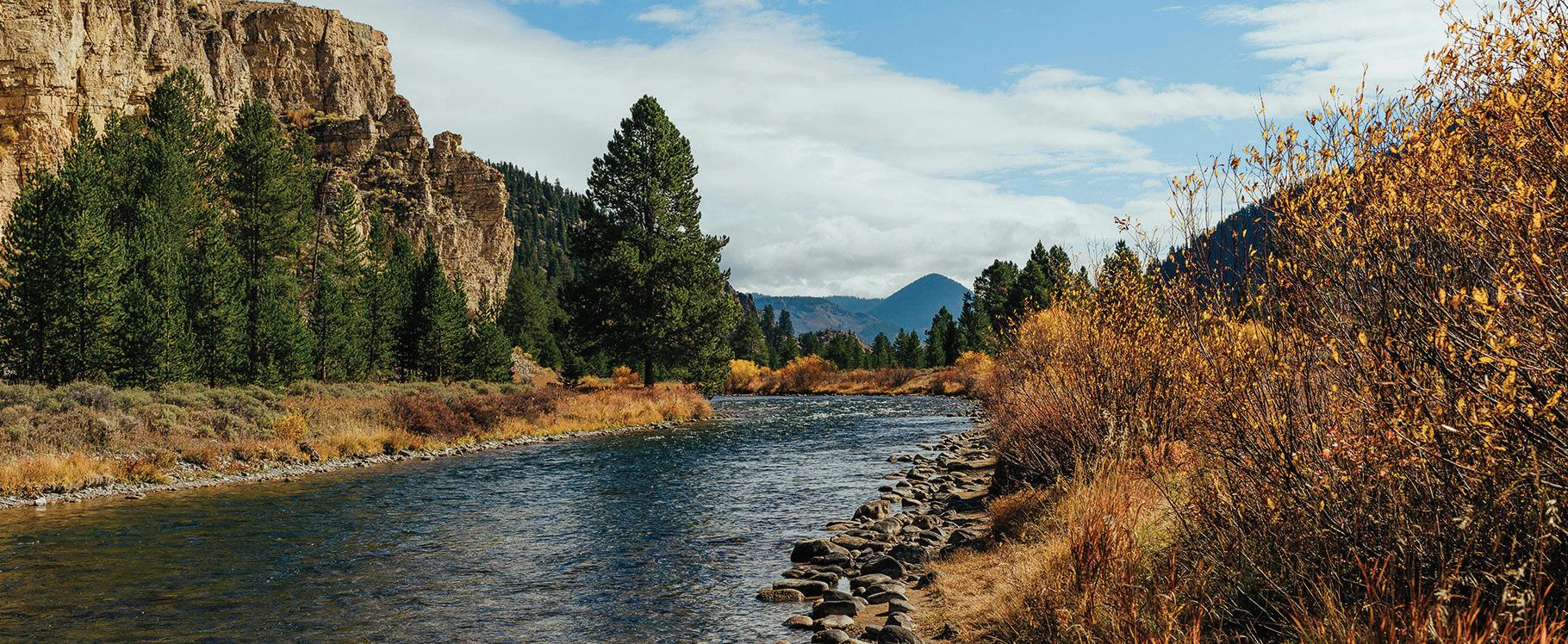

to the housekeeping or maintenance workload, will more than pay for themselves with higher nightly room rates. Offering a hot tub experience clearly enhances the guest experience, provides a notable competitive advantage and an aspirational marketing tool.
When brands or operators mention “experiential outdoor hospitality”, or “naturebased lodging”, the foundation of this offering should be a direct interaction with the basics of the natural world or the classical elements. Of these elements, it is only water that allows guests to have a fully immersive physical experience. While the grounding effects of a beach walk, the fresh pine-scented mountain air in your lungs, or the warmth of a campfire are all important, it is the feeling of water on every inch of your skin that gives the feeling of direct connection with or oneness with the physical world and our beginnings. The glamping experience should strive to facilitate the water experience for all guests.
About Todd G. Wynne-Parry
A seasoned leader in the hospitality industry, Todd has over 30 years of hotel development experience, having held senior leadership positions at several major hotel brands and most recently AutoCamp and Two Roads Hospitality. A dual-citizen of the US and Australia, Wynne-Parry has lived and worked in the U.S., Asia, Australia and the United Kingdom. He was instrumental in the development efforts for IHG, Starwood and Marriott in the Asia Pacific region and for Two Roads Hospitality globally. He began his career as a hotel consultant in the San Diego office of Laventhol & Horwath, the predecessor to Horwath HTL. He is now Managing Director of Horwath HTL and leads the Outdoor Hospitality practice for North America. Horwath HTL is the largest independent hospitality consultancy with 52 offices worldwide.
Todd earned an MBA from Thunderbird Graduate School of International Management and sits on the advisory council of the American Glamping Association. In his spare time, Todd enjoys fly fishing and exploring the western US in his 1953 Airstream.
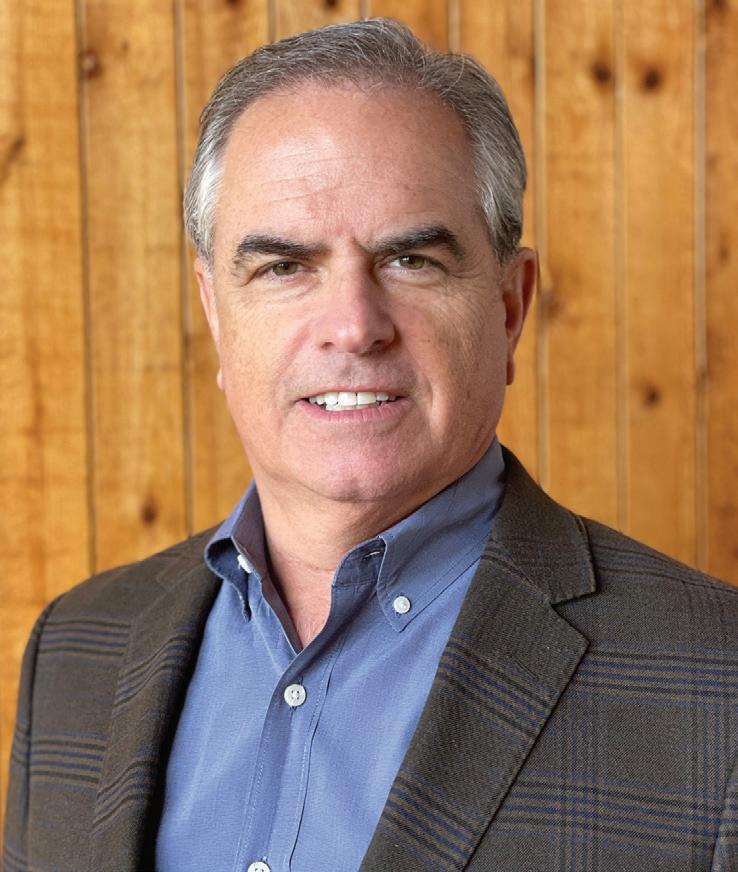
glampingshow.us | Glamping Business Americas | 39
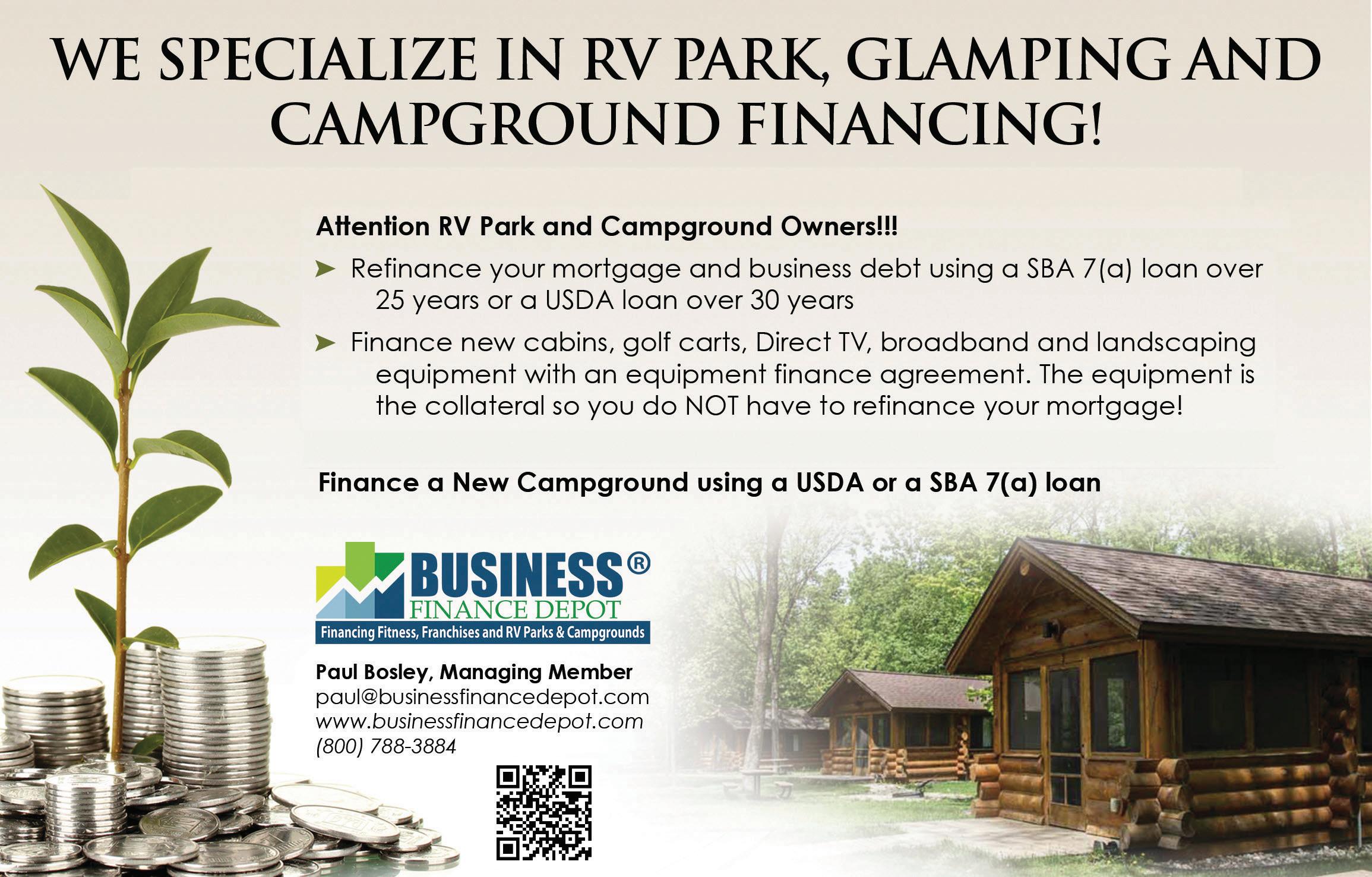

40 | Glamping Business Americas | glampingshow.us
THE GLAMPING STRUCTURES WITH THREE LIVES

At last year’s Glamping Show, attendees may have encountered Ekō Solutions, a company that introduced the concept of ‘double recycled’ shipping container glamping accommodations. These structures undergo a unique journey, initially serving as disaster recovery housing before being repurposed into desirable glamping units. To delve deeper into the company’s mission and inspiration, we caught up with Peter Rodriguez, the President of Ekō Solutions LLC.
Ekō Solutions was inspired by a vision rooted in fostering positive impact and uplifting communities, which aligns with its parent company, Land Betterment. The mission is to create sustainable community development and job opportunities. Recognizing the significance of a home as the foundation for families, Ekō Solutions’ residential division focuses on building affordable luxury communities using recycled shipping


containers. These structures provide both attractive and sustainable housing options for rural and developing communities, addressing the crucial need for homes that families can genuinely enjoy and afford.
In addition to residential initiatives, Ekō Solutions’ commercial division is dedicated to crafting innovative and versatile structures for industries such as ours. These structures prioritize creativity, safety, durability, and efficiency. With a full-service fabrication department, the company possesses the capability to bring any design to life. Furthermore, their team’s proficiency in quick rendering and creative engineering enables them to provide customers with swift project visualization and adaptability to meet both customer and regulatory requirements effectively.
In March of 2023, Ekō Solutions made its debut in the glamping sector with the introduction of the “Gateway” line of park model RVs. Since then, the company has embarked on a series of exciting projects, ranging from expanding the Gateway line to developing essential amenities such as bathhouses, bathrooms, and lounge areas for their units.
One notable upcoming project is the ekō Outpost at Poplar Point in Athens, Alabama. This endeavor promises to be an exceptional addition to the company’s portfolio, offering a unique and immersive glamping experience in a picturesque location.
“We have coined the phrase ‘double recycled’ which means our products have had 3 lives,” says Peter. “The shipping container was first used as originally intended – to house goods being shipped across the ocean. Then the second life is a disaster
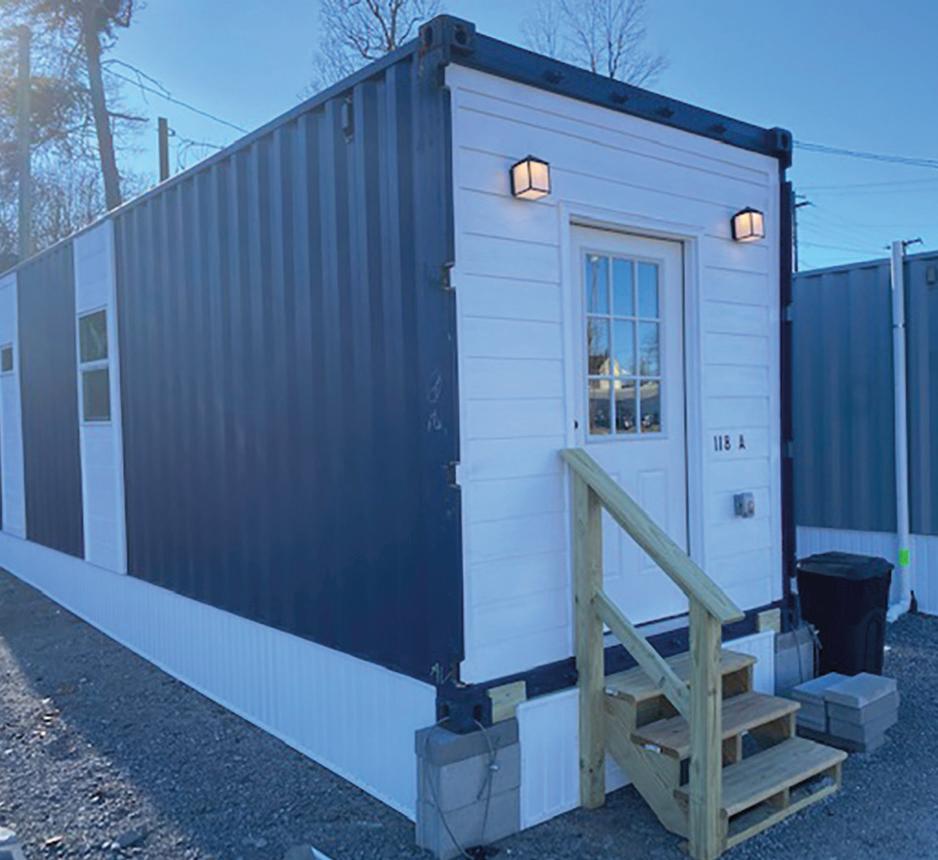
recovery home for victims of natural disasters. And finally, that same unit is converted and renovated into a cool and unique glamping unit.”
A shipping container is certainly a sturdy structure, as well as a versatile one. “In many cases the container structure can last 70 years without needing significant work done to it,” says Peter. “We also have a few different options we offer for locking into a foundation or ground to meet each area’s weather conditions. Containers have limitless opportunities in what they can become. They are the Lego building blocks that everyone gets excited about to create that beautiful thing they have in their minds. From rooftop decks to exciting combinations of container stacking, the options are endless to what we can create with containers.”
Ekō Solutions source the containers with partner shipping depots and put them through their modular construction building process which ends in a third-party quality and compliance inspection to ensure all units meet the same standards and requirements as a traditional home. Containers are easy to move, and the onsite set-up is straightforward. This makes shipping container living a quick and easy solution.
Peter and his team has noticed a lot of interest in shipping containers for glamping since their launch. Peter puts this down to their versatility.
“The aesthetics of containers are also a big reason for the increased interest. Just about everything is customizable from different exterior siding and facades to artistic exterior paint jobs or the chic look of interior shiplap. These houses can look amazing with small tweaks to the design,” he says.
glampingshow.us | Glamping Business Americas | 41
Cottage House exterior and interior (below)
IT’S ACCRUAL WORLD
It’s Business 101: money coming in equals revenue, money going out equals expenses, and what’s left over equals profit. For most businesses, this cash basis accounting method is how they track their finances. It’s basically the same operation at every six-year-old’s lemonade stand; guilt creeps in, and before you know it, you’re doling out quarters (revenue) while subtracting the cost of those fancy sugar water ingredients (expenses) to tally up their proud profit. Or, if you’re like us penny pinching accountants, you duck down and keep on driving.
Yet, in the real world, that lemonade stand accounting doesn’t cut it. Businesses need to account for seasonality, labor margins, average cost per lemonade, and segregate those extra quarters into a distinct account to avoid mistaking them for available cash on hand. In other words, as businesses grow and want to maximize their profits, it’s time to embrace an “accrual” world.
WHAT IS ACCRUAL BASIS ACCOUNTING?
First, let’s define our nemesis, cash basis accounting. Cash basis recognizes revenue as it comes into your bank account and expenses when they come out of your bank account. The only things showing up on your financials are when money changes hands. However, accrual basis attempts to recognize revenue when it’s earned and recognize expenses when they’re incurred.
Consider this scenario: you’re the proud owner of a glamping retreat nestled in a charming ski village. Every time it snows, you hire a snowplow business to clear your parking lot. However, the frequency of their service isn’t set in stone; it depends entirely on the whims of the weather. As a result, they bill you after the fact, making it difficult to predict the expenses in advance. And what if you don’t receive their bill until May so it doesn’t get paid until July? Following a cash basis approach, you’d recognize the expense in July when the bill is paid. Can you imagine how absurd your books would look with a snowplow expense in July? Accrual-based accounting would acknowledge the bills in January, February, March, and April, reflecting expenses at the time they were incurred. Which makes sense that there would be a snowplow expense during the period when guests are drawn to your property due to snowfall.
Accrual basis accounting fixes timing or seasonality discrepancies by utilizing key balance
sheet accounts to hold the balance until the cash is ready to change hands, but that’s not the only benefit.
ADDITIONAL BENEFITS
When you recognize revenue at the time it is earned at the exact same time as the expenses are incurred, you can begin to see key metrics in your finances that drive profitability. Some examples include labor margin, cost per occupied room, guest amenities, supplies, utility rates, and much more.
More importantly, you’ll begin to see revenue driving metrics like your average daily rate, burn rate, and cash on hand. For glamping businesses with advance deposits, cash basis accounting can be challenging as it creates the illusion of available cash on hand from these deposits, despite them not yet being earned. Accrual basis accounting holds these deposits aside on the balance sheet as funds you would technically owe back in the case of cancellations or unforeseen circumstances.
HOW DO I IMPLEMENT ACCRUAL BASIS ACCOUNTING?
The easiest way forward is to connect with a trusted and knowledgeable accountant or expert who can set up your accounting system on an accrual basis and provide consistent reports highlighting those critical metrics. However, if you’re inclined towards the do-it-yourself approach, here’s our recommendations on how to get started.
1) Harness the capabilities of your property management system. Regardless of the software in use, you should be able to adjust your revenue to only be recognized for each day it’s earned and make sure that advance payments are logged in an advance deposit ledger, while any outstanding guest charges are being recorded in a guest ledger accounts receivable.
2) Similarly, accounting software such as QuickBooks should be able to track accrual-based financials by utilizing its accounts payable module or in some instances its accounts receivable module, depending on the software.
3) Record expenses over time instead of one large lump sum. With insurance payments, for example, you usually pay for ten months to a year ahead of time with one lump sum. Consider spreading

this cost over those ten months to give you a better idea of the expense per its lifecycle. This is true for property taxes, annual subscriptions, prepaid expenses, and we have even begun to talk about depreciation.
IN A NUTSHELL
Depending on the size and complexity of your glamping venture or lemonade stand, cash basis accounting may suffice. However, if you’re tired of relying on your gut or guesstimating on when to spend money and how to drive profit, accrual basis accounting is necessary. This method offers insights and real numbers for informed decisionmaking and ultimately peace of mind.
About Tyler Otto
Tyler Otto is the president and owner of Specialty Bookkeepers & Tax, a successful virtually based hospitality accounting firm. Tyler brings a wealth of finance experience from the lodging industry, where he served as a Senior Financial Analyst at Vail Resorts and Corporate Director of Finance with Imprint Hospitality. He is passionate about helping glamping owners make strategic financial decisions that will grow their business for years to come.

42 | Glamping Business Americas | glampingshow.us



















































































